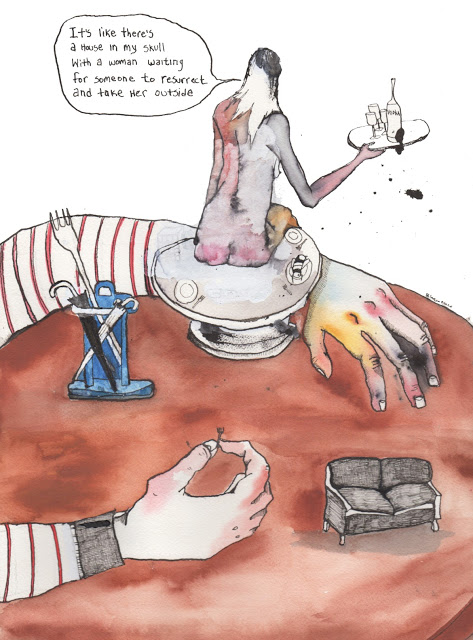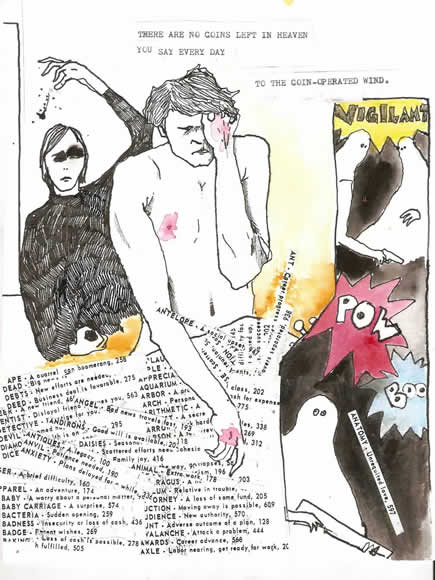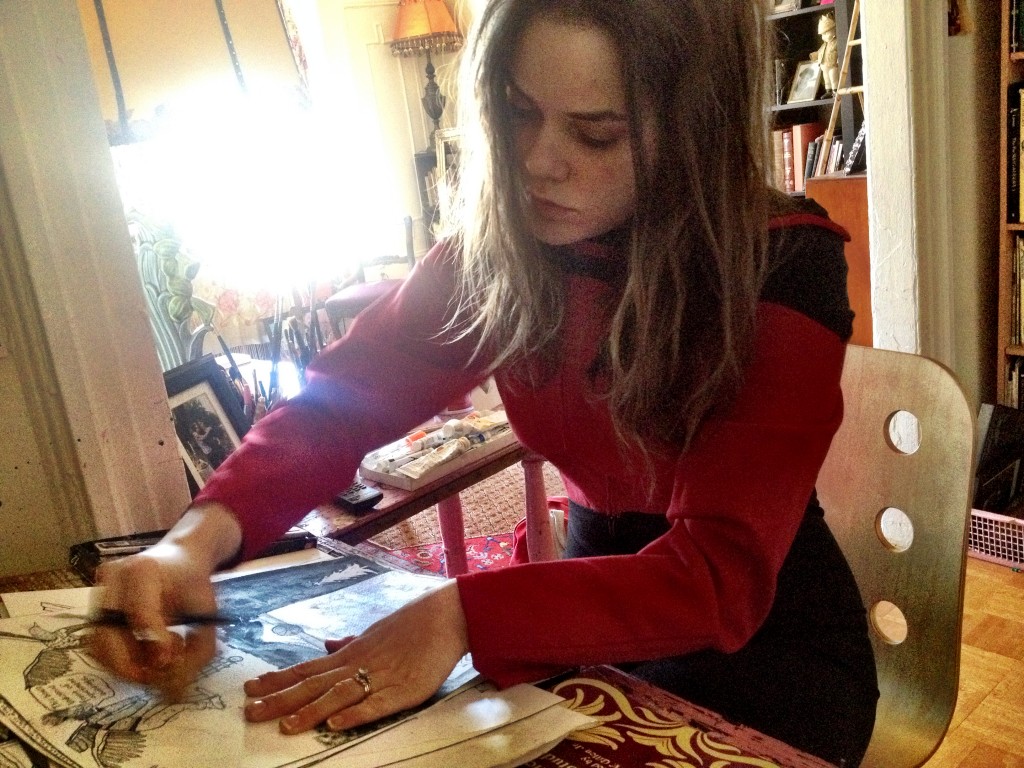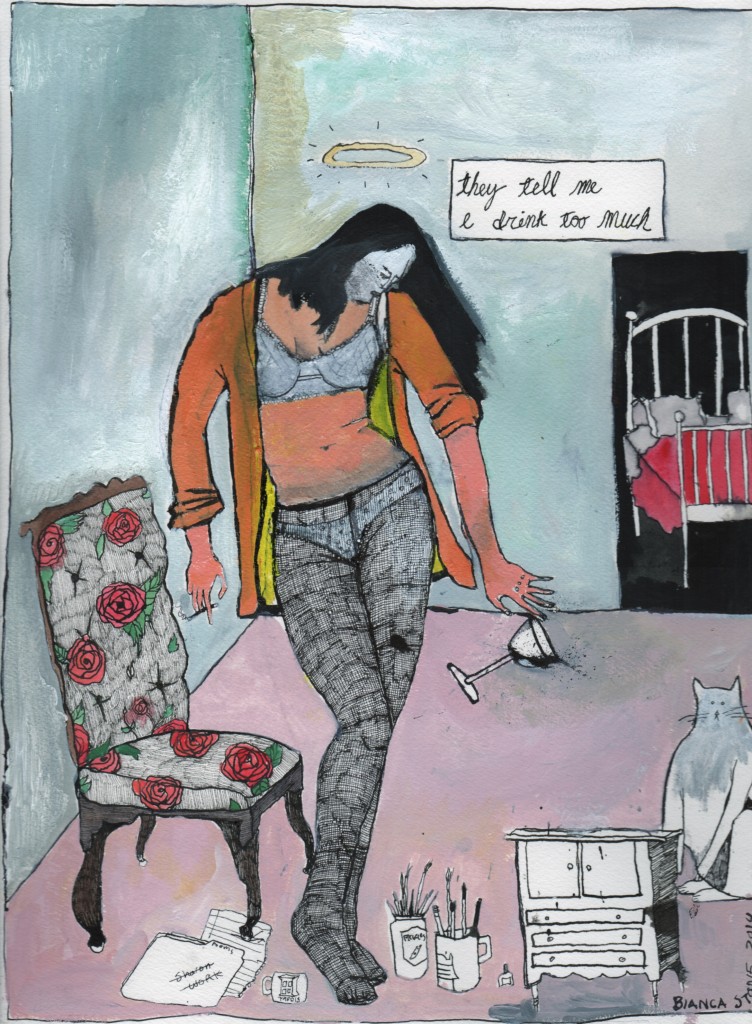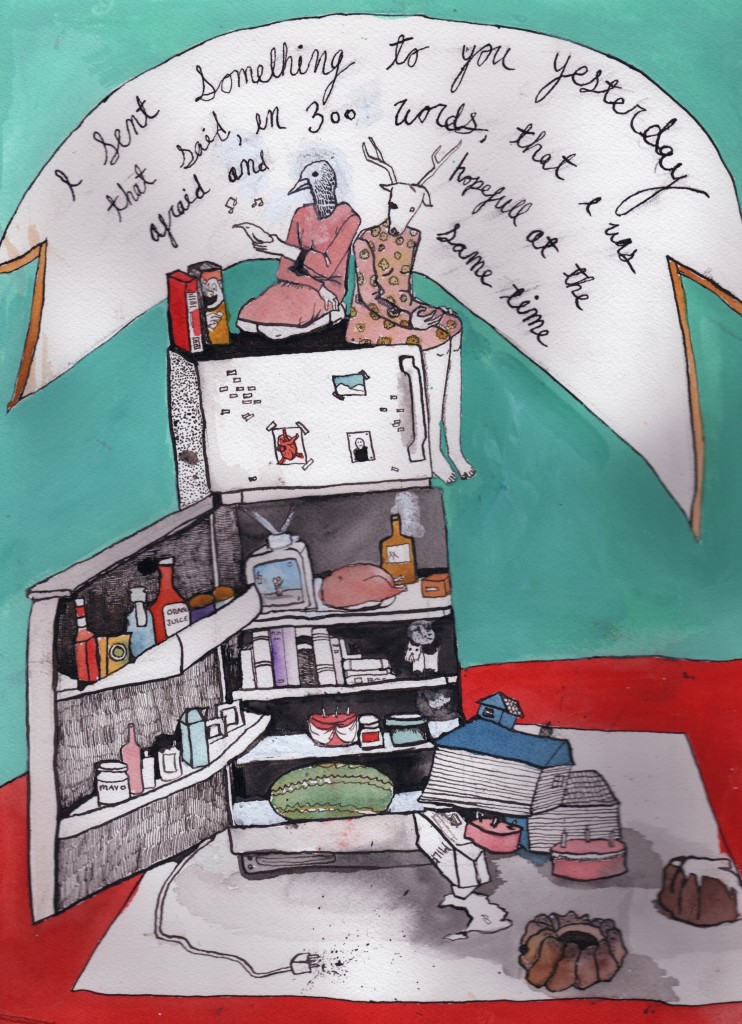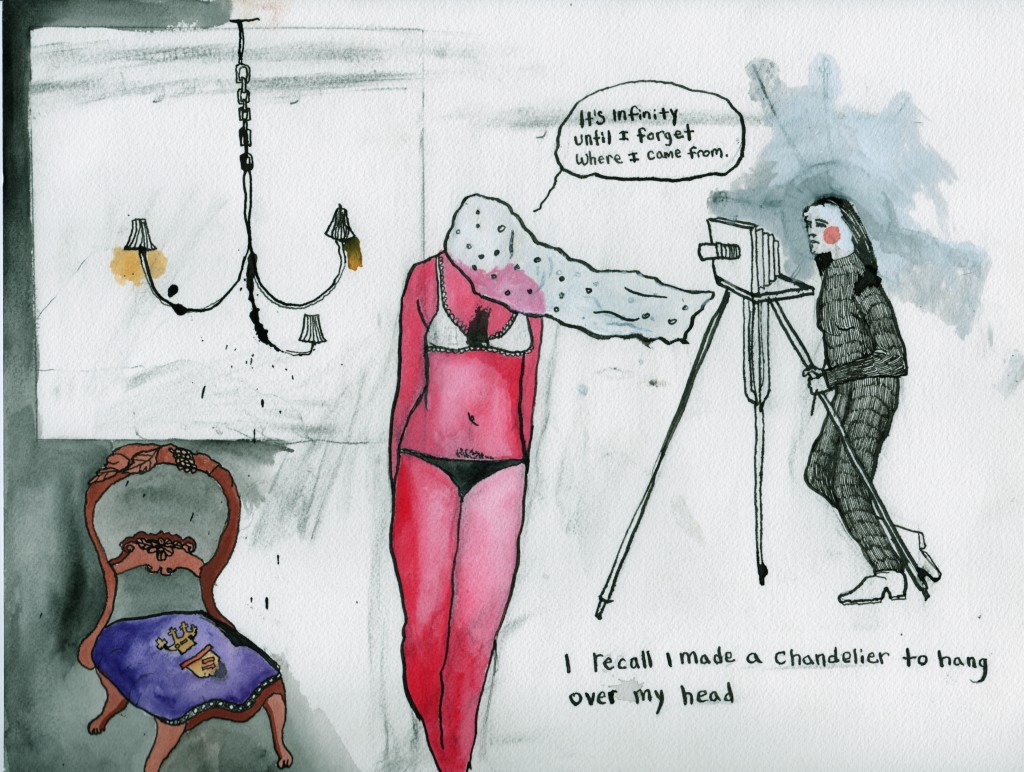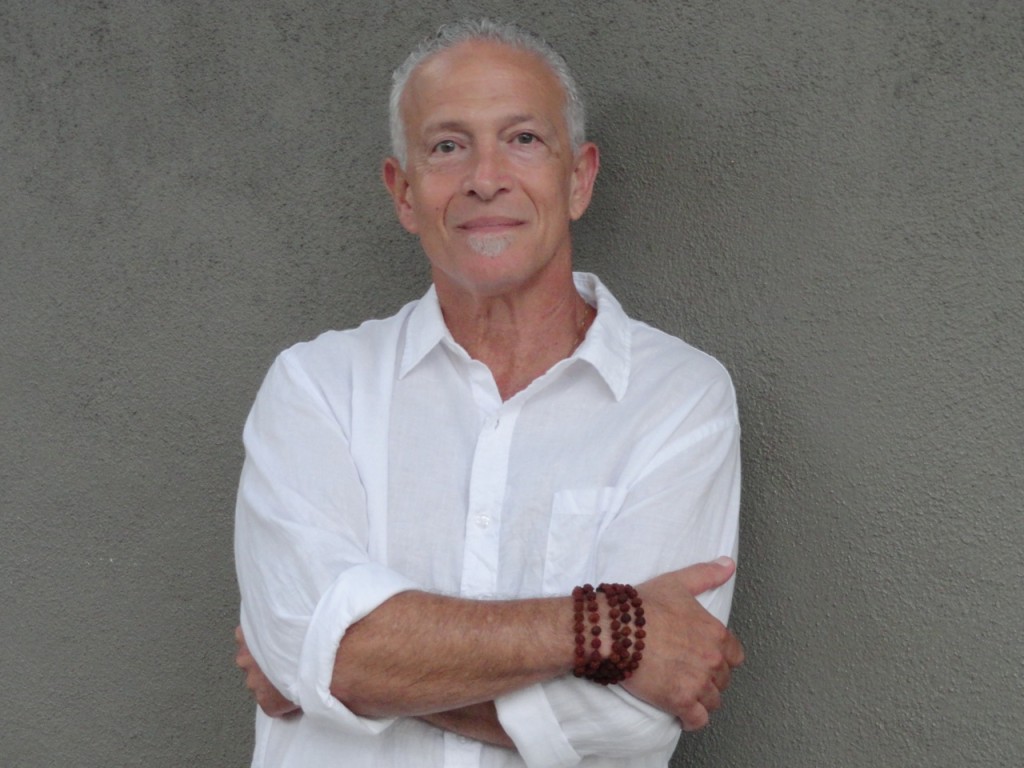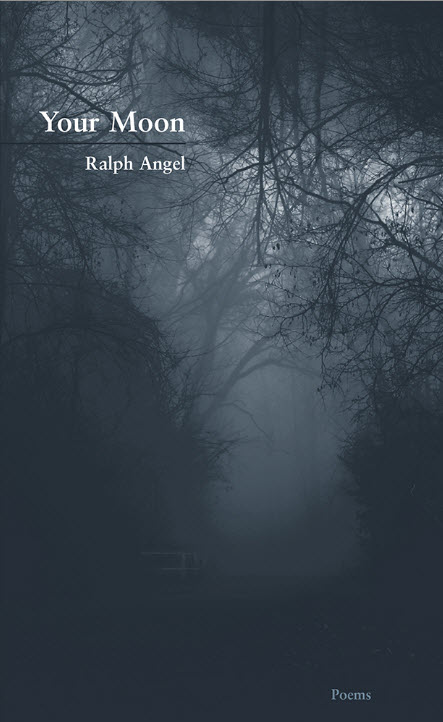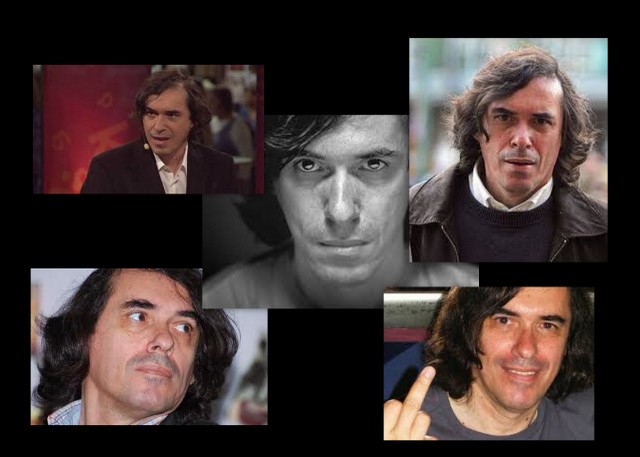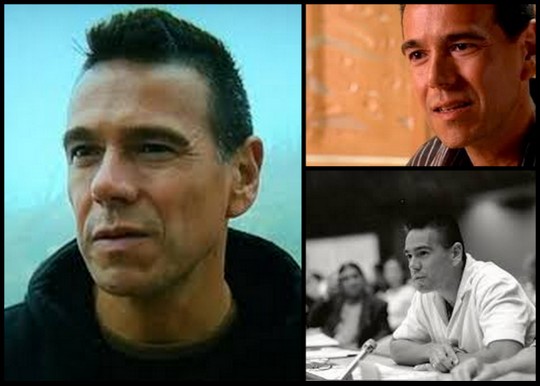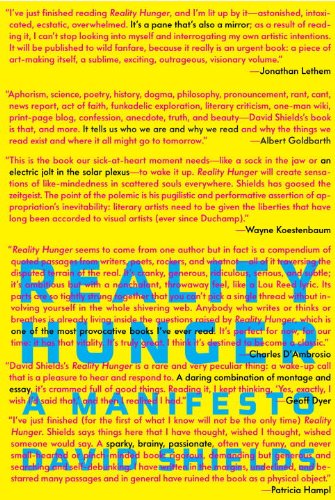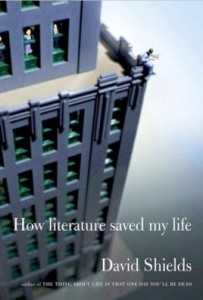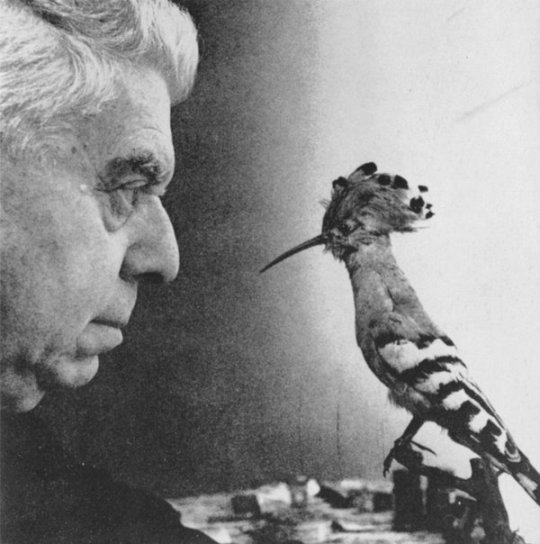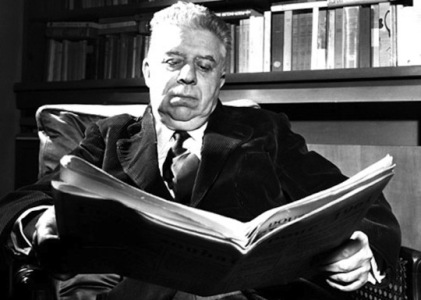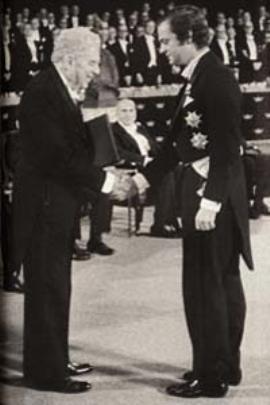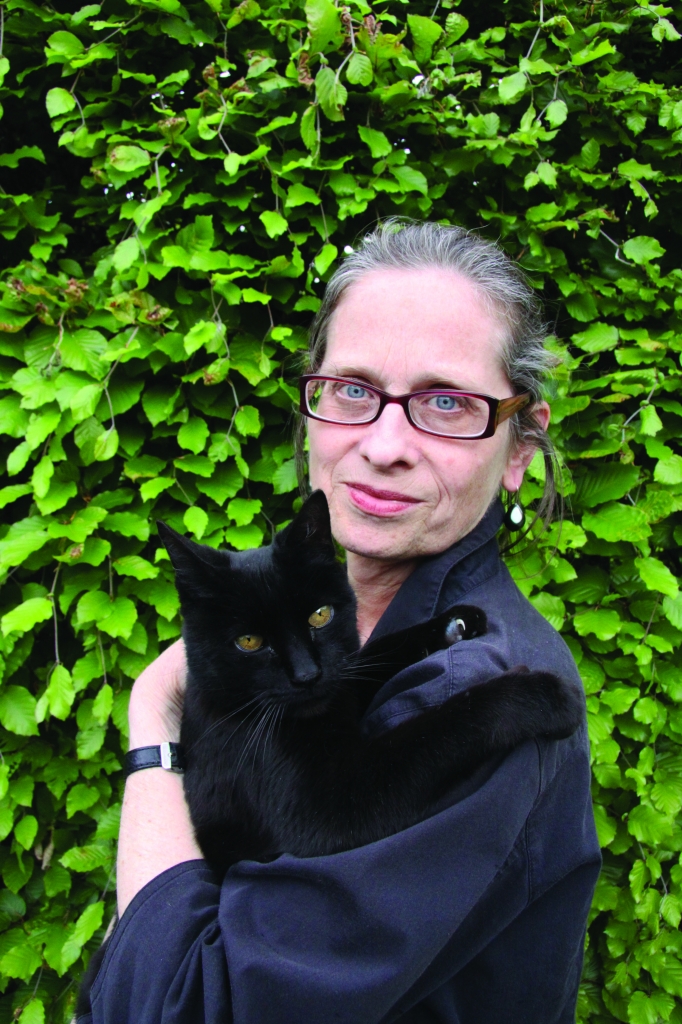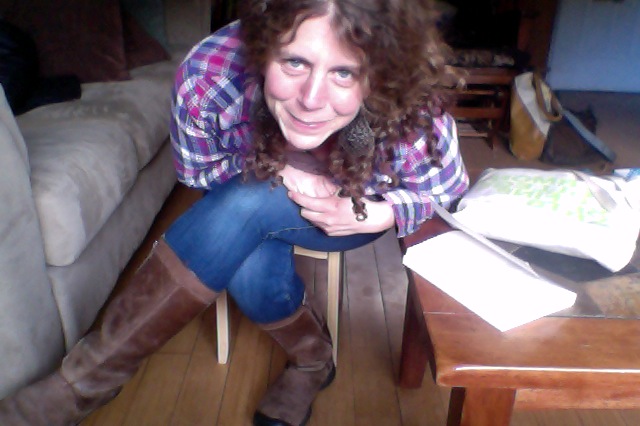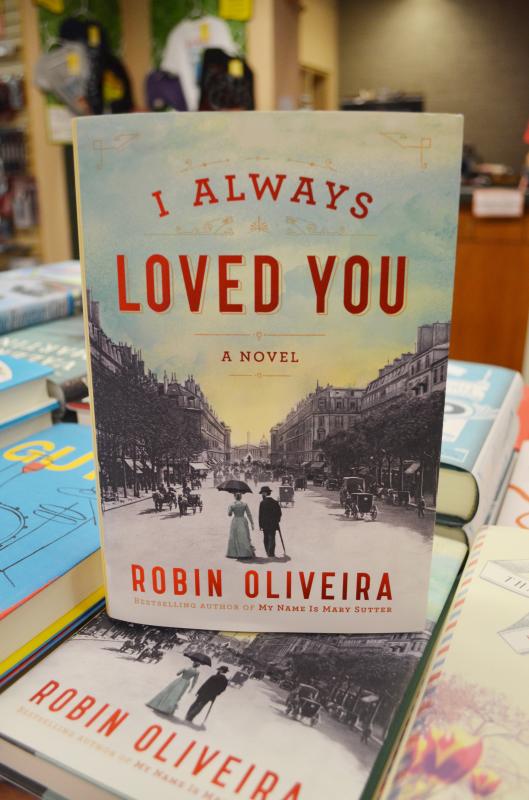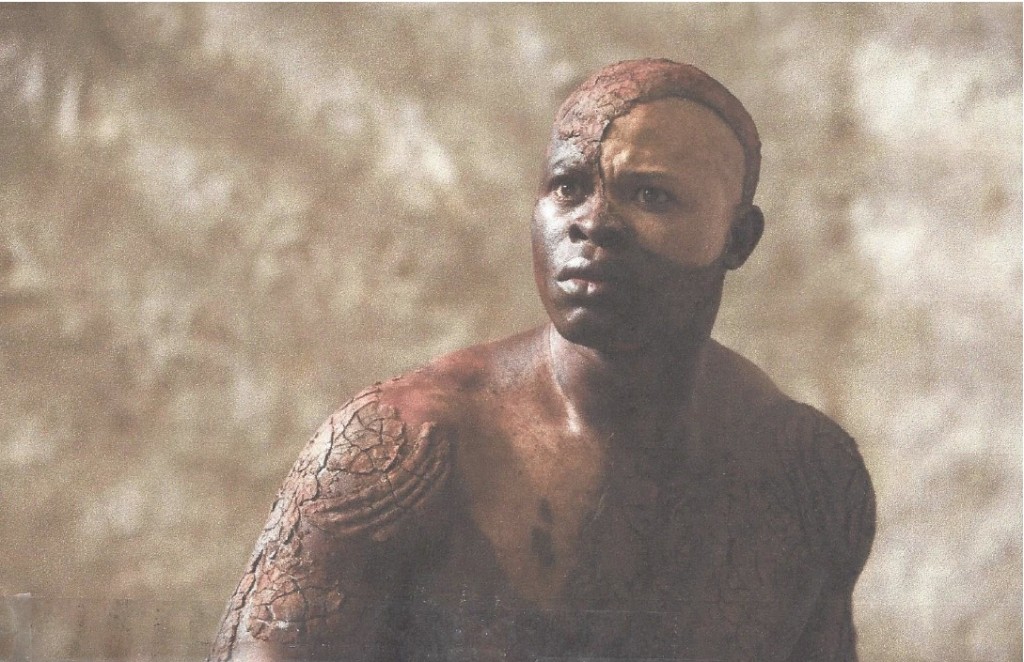 Djimon Hounsou as Caliban
Djimon Hounsou as Caliban
Pat Keane’s casual and encyclopedic erudition has become legendary on the pages of Numéro Cinq; he’s an eloquent magician who can pull an apt argument or a lengthy quotation out of his hat as if he were ordering breakfast at a diner. After reading one of his essays, I am always asking myself, Does he ever look anything up, or does he just remember it all? It doesn’t really matter how he does it; Pat’s years of reading and writing, his vivid recall of same, are his gift to us, his readers.
This time, following his essay on Keats and identity in our January issue, Pat goes after Defoe’s Crusoe (Friday) and Shakespeare’s Caliban, also Bloom, Coleridge, and Aimé Césaire, and fashions a dense, exhaustive (he rather cutely says it’s not exhaustive at the end, but you can see him trying to get everything in) and brilliant ramble through the arguments of identity criticism of, say, the last fifty or one hundred and fifty years. This is an essay bursting its seams with ideas and fine degrees of discrimination, a book-in-an-essay, as it were, explosive, wise and generous. And it all starts with Pat simply wondering why the anti-slavery Coleridge, who loved Defoe’s Robinson Crusoe, never seemed to mention the fact that Crusoe is a slaver, odd oversight.
All this is fascinating to me personally because, of course, my novel Elle is, in part, a revision of Crusoe (like Crusoe, my heroine is an agent of colonization and she finds a footprint, first sign of the Other, first inkling that she is not living in a solipsistic, all-white universe).
One small thing that I admire excessively in this essay is Pat’s habit of clearly untangling influence and school of thought. In an essay about identity, he carefully parses identity and point of view (perspective) for each of his litigants. As you will see, he begins by telling you who he is.
dg
As we have become increasingly aware, we all have multiple identities, a plurality of affiliations, depending on context. I am a male white heterosexual American senior citizen of Irish heritage fascinated by literature in the Romantic tradition, the racehorse Secretariat, the St. Louis Cardinals baseball team, film noir, women with aquiline noses, and the absurdity not only of the excesses of political correctness but of the even greater excesses of the extremist wing of the contemporary Republican Party. These and similar “identities” are mostly benign, overlap with little or no friction, and are subsumed within my sense of shared membership in the human race. The danger comes when affiliations become exclusionary and fanatic, and thus subject to ideological manipulation. Nobel Prize winner Amartya Sen, who personally experienced the transformation of “within-group solidarity” into “between-group discord” during the Hindu-Muslim riots in 1940s India, demonstrates, in Identity and Violence (2006), how, in this and similar cases, “Violence is fomented by the imposition of singular and belligerent identities on gullible people, championed by proficient artisans of terror” (2).
“Identity politics,” whether in the form addressed by Sen (a sectarian Islamist violence we now see threatening much of the Greater Middle East, Africa, and beyond), or in its less lethal but still problematic and potentially destructive electoral forms, is distinguishable from but often necessarily overlaps with religious, sexual, cultural, and racial “identity.” Our gender, sexual orientation, religion, ethnicity, and race, though they need not be wholly determinative, obviously play an enormous role both in how we conceive of ourselves and how we respond to the world around us. That world includes, along with the sociopolitical realm, the world of art: the world artists create or reshape, and the art to which the rest of us respond.
The past four decades or so have witnessed the rise of “cultural studies,” in which attention has been focused on works marginalized or excluded by the dominant political and aesthetic ideology: white, male, and European. The more recent marriage of “new historicism,” “multiculturalism,” “postcolonial studies,” and “identity theory” has bred many books and articles urging readers, not only to expand their sense of the literary canon, but, in reading traditional canonical texts, to shift their sympathy, whatever the original author’s intentions, from the dominant to the subversive characters in literary works of art, especially novels and plays. The various agendas range from aesthetic “correction” through a humane rebalancing, to overt calls for political action to redress injustices.
Like traditional humanists, these theorists place the human subject at the center of the scene of writing, interpretation, and political action. However, the humanistic emphasis on universalism is replaced by an insistence on one’s identity as part of a specific group: as the member of an ethnic, racial, or sexual minority. In this counter-narrative to the “master-narrative” of Western hegemony and imperialism, the “subaltern” (suppressed, different, “other”) is privileged over the “master.” As early as 1950, when French colonial civil servant Octave Mannoni published Psychologie de la colonization, but increasingly in the wake of Edward Said’s influential Orientalism (1978), postcolonial writers and theorists have resisted both overt oppression and the more insidious forms of “internalization” that infect the very discourse of colonized peoples, upon whose indigenous culture has been superimposed the culture of the conquerors.
When I was recently invited to participate in a two-day panel discussion of “Identity” (the proceedings will be published later this year in Salmagundi), I found myself, now retired, casting a retrospective cold eye back on my professional life as a literary critic. When I did, I benignly envisioned a person—myself—attempting to be open and receptive, trying to discover rather than impose, even striving to be “objective”: an impossible goal, but one worth aiming for in the attempt to at least approximate what can never be fully attained. Though a practitioner of intrinsic criticism, “close reading,” I did not slight history and the sociopolitical world in which literary works were embedded. In discussing the great first-generation Romantic poets (Blake, Wordsworth, Coleridge), I always placed their texts in the inevitable context of the French Revolution—which Shelley, a second-generation Romantic, rightly designated “the master theme of the epoch in which we live.” No less obviously, in discussing in the classroom works of literature in which, for example, race or Western imperialism was an element, I stressed those dimensions in trying to illuminate the text. But in my published work, I belatedly realized, I had only occasionally engaged issues of race and identity.
.
2
They did come up some twenty years ago in a book titled Coleridge’s Submerged Politics. Though my focus in that book was The Rime of the Ancient Mariner, I devoted some initial attention to Coleridge’s later marginalia on a novel he had loved from boyhood on, Robinson Crusoe, whose isolated protagonist was kin to his own Mariner, “alone on a wide, wide sea.” In reading those annotations, and at the risk of swelling the ranks of poststructuralists given to scratching their knowing heads about “not saids,” “gaps,” and “significant silences” in texts, I was puzzled that a man on record as being morally, intellectually, and emotionally appalled by slavery and the traffic in human flesh should not only say nothing about Crusoe’s slave-trading activities but should actually propose him as the “Universal representative” of humanity: an Everyman whose actions, thoughts and emotions we can all, according to Coleridge, imagine ourselves doing, thinking, and feeling (Marginalia, 1:165-67). We “get” the gist of what Coleridge is saying, but it does not take a contemporary Identity theorist to resist the elevation of Defoe’s flawed Crusoe to the stature of a representative of universal humanity.
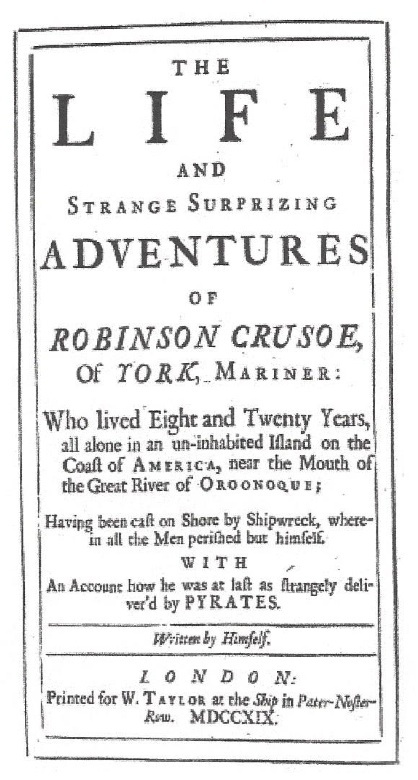
Of course, those annotations were jotted down, not in, say, 1795, when a revolutionary and egalitarian young Coleridge had written “On the Slave Trade,” his searing assault on the moral atrocity of slavery, the horrors of the slave trade and the Middle Passage. Nor in 1798, when he wrote The Ancient Mariner (in which for some readers, beginning with William Empson, the curse and eventual shipwreck hint that the Mariner’s ship was a slaver). He annotated Robinson Crusoe half a lifetime later, in 1830, by which time the former radical, no longer egalitarian though still an advocate of abolition, had turned culturally and politically conservative. Nevertheless, even given Coleridge’s socio-political shift, and taking into account the exercise of historical imagination by a sophisticated reader perhaps unwilling to condemn Crusoe and his creator for a sin more obvious in his age than in Defoe’s, I remained puzzled by the absence of even a passing reference to slavery and the slave trade. Of course, I realized that to push this theme exclusively would itself be a sin: a sacrifice of the splendor of Defoe’s achievement in giving the world an iconic book and popular myth that has fascinated children and adults ever since it was written. For Coleridge was surely right about a major aspect of Crusoe as “Universal representative”; though, in an age of specialization, few of us could match his ability to adapt, we all respond to Crusoe’s “practical-man” energy and inventiveness in surviving, even thriving in the course of his quarter-century on the island.
Yet I remained troubled by the seeming lacuna in the marginalia when it came to Crusoe’s slaving activities, as well as his subsequent relationship with Friday. After all, under all the shifts and oscillations in Coleridge, there seemed to me to be an abiding, and deeply moral, identity. I still think so, though the question of identity now seems to all of us, and certainly to me, far more perplexed and perplexing than it did twenty years ago. Back then I wanted to make a sharp distinction between Coleridge the political and moral Man and abolitionist, and Coleridge as a supposedly apolitical appreciator or literary Critic, sitting down to re-read a much-loved work of literature, a fable that had always fired his own creative imagination. Without succumbing to any politically correct urge to beat Coleridge about the head and shoulders for his failure to so much as mention slavery in his extensive Robinson Crusoe marginalia, I’m less able now to sustain that sharp distinction. Will the real Coleridge stand up? And he will, claiming, not without considerable justice, that there is consistency beneath the difference, an underlying identity. Yet that claim is more justifiable, and more palatable, in terms of his political shift than any Coleridgean claim to an underlying continuity regarding his shifting position on race.
Like his friend and “fellow-laborer,” Wordsworth, Coleridge always maintained that the French Revolution betrayed itself, and that their move from radicalism to conservatism reflected that Gallic betrayal. To employ E. P. Thompson’s terms, “disenchantment” rather than “default” explains their disillusionment and reactionary shift to quietism. That shift— accompanied by their insistence that the authentic agent of change was not political activism but the creative Imagination—will perhaps always inspire mixed feelings on the part of their readers, readers who are themselves politically divided. But it is almost unrelievedly painful to witness the regression of Coleridge on issues of race, from uncompromising advocate of egalitarianism and liberation to a defender, on the basis of pseudo-science and the need for societal stability, of white superiority. And yet, since he remained an abolitionist, there is still a continuum between early and later Coleridge, his identity somehow subsuming antagonistic perspectives.
Variations on that dualistic theme may obviously be found in many writers. I recently published in Numéro Cinq an essay titled “Keats and Identity: The Chameleon in the Crucible,” in which I try to reconcile Keats’s two apparently antithetical conceptions of “identity.” To name just three other peripherally interrelated cases: there is self-divided Sam Clemens/ Mark Twain, whose masterwork, Huckleberry Finn, at once reflects and opposes racism; that Mark Twain enthusiast, Friedrich Nietzsche, a relentless seeker of the very truths he did more than anyone else to undermine; and W. B. Yeats, who found in Nietzsche a “strong enchanter” whose aristocratic brio, employment of masks, and “curious astringent joy” (Letters, 379) propelled the Irish poet out of the Celtic Twilight into modernity and political conservatism. Yet there is a continuum here as well, and Richard Ellmann was right in both titles of his pioneering studies: Yeats: The Man and the Masks, followed a decade and a half later by The Identity of Yeats.
.
3
In brooding over Coleridge’s marginalia on Robinson Crusoe, I eventually gave up trying to bridge the gap separating the author of “On the Slave Trade” from the annotator who had nothing to say of slavery and the slave trade in celebrating Crusoe as a universal representative of all mankind. Some years after publishing the Coleridge book, in the course of re-reading The Life and Adventures of Robinson Crusoe, I found myself unwilling to follow the vast majority of Defoe critics who insist on another sharp distinction: in this case, between author and character. Defoe, we are told, was “ambivalent” about slavery and “ironic” in his fictional handling of the subject. He may be elsewhere; he is neither ambivalent nor ironic in his most celebrated novel. Playing off Coleridge’s claim that Robinson Crusoe is a “Universal representative,” I published an essay titled “Slavery and the Slave Trade: Crusoe as Defoe’s Representative.”
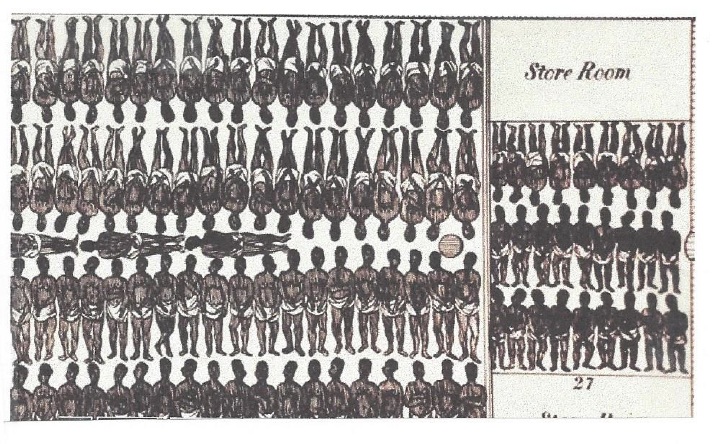 Interior of a Slave Ship. This detailed drawing shows how the “cargo” was arranged to maximize capacity.
Interior of a Slave Ship. This detailed drawing shows how the “cargo” was arranged to maximize capacity.
There I argued, to the annoyance of some prominent Defoe scholars, that while Crusoe (as mercantilist and imperialist as his creator) may not be, strictly speaking, identical to Defoe, on the issue of slavery and the slave trade there seemed little to choose between them. Crusoe, newly engaged in slave-trading when he is shipwrecked, never, in his many years of hand-wringing religious rumination, thinks to attribute his calamity to the sin of buying and selling human beings. Nor does it occur as a possibility to Defoe, who, after all, had the option of enlisting Crusoe in another line of work. Though slavery and the slave trade become tangential once ship-wrecked Crusoe has been marooned on his island, they nevertheless, as Michael Seidel observed in 1991, “hover like something of a curse” over the entire novel (Robinson Crusoe, 106), re-emerging in a more benign but persistent and unironic Master-Slave relationship once Crusoe has saved from cannibals the near-victim who will become his Man Friday.
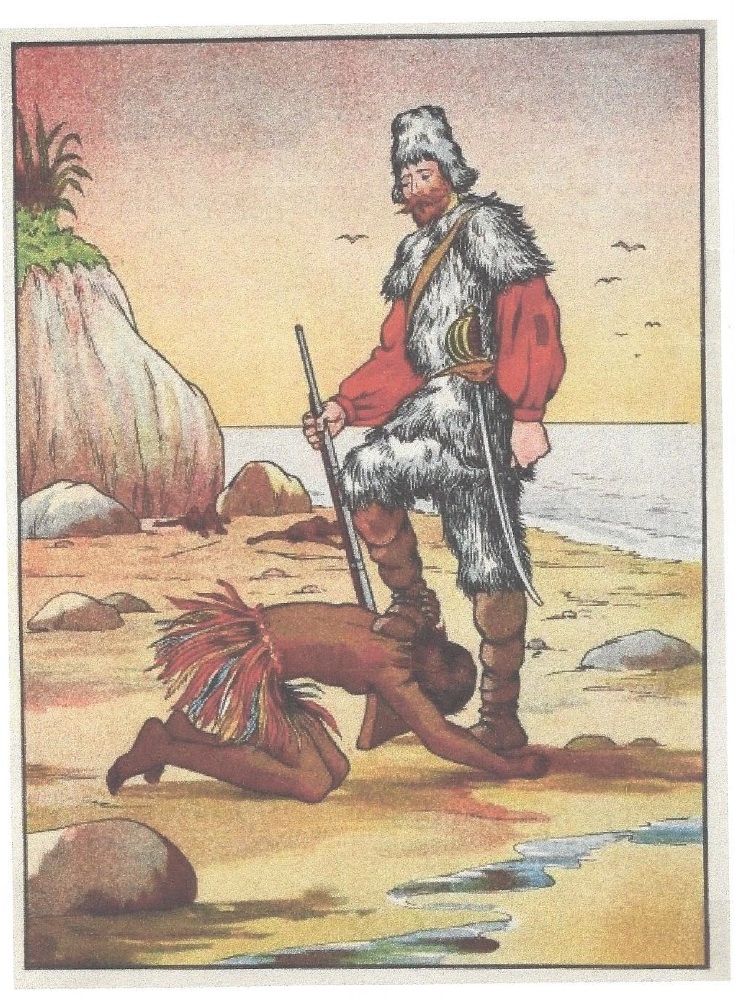 Robinson Crusoe, chapter 23: “At last he lays his head flat upon the ground, close to my foot, and sets my other foot upon his head, as he had done before; and after this made all the signs to me of subjection, servitude, and submission imaginable, to let me know he would serve me as long as he lived…I began to speak to him and teach him to speak to me; and first, I made him know his name should be Friday, which was the day I saved his life;…I likewise taught him to say ‘Master,’ and then let him know that was to be my name.”
Robinson Crusoe, chapter 23: “At last he lays his head flat upon the ground, close to my foot, and sets my other foot upon his head, as he had done before; and after this made all the signs to me of subjection, servitude, and submission imaginable, to let me know he would serve me as long as he lived…I began to speak to him and teach him to speak to me; and first, I made him know his name should be Friday, which was the day I saved his life;…I likewise taught him to say ‘Master,’ and then let him know that was to be my name.”
Though most Defoe scholars insist on their author’s double-mindedness on these issues, many who emphasize his ambivalence mistake Defoe’s criticism of the cruelty inflicted by traders and owners for condemnation of the institution itself. Writing in the 22 May 1712 number of his Review, Defoe had this to say about English slaveholders in Barbadoes:
The Negroes are indeed Slaves, and our good People use them like Slaves, or rather like Dogs, but that by the way: he that keeps them in Subjection, whips, and corrects them, in order to make them grind and labour, does Right, for out of their Labour he gains his Wealth: but he that in his Passion and Cruelty, maims, lames, and kills them, is a Fool, for they are his Estate, his Stock, his Wealth, and his Prosperity. (Review, VII, 730)
Having mistaken utilitarianism for altruism, many apologists for Defoe then compound the misperception by translating his alleged ambivalence into authorial “irony” when slavery and the trade feature in the fictional works, including The Life and Adventures of Robinson Crusoe and the later Farther Adventures of Robinson Crusoe. Whatever his divided, even contradictory, feelings regarding the slave trade (expressed, for example, in his 1702 poem, A Reformation of Manners, or in such novels as Captain Singleton and Colonel Jack), Defoe adamantly defended the trade in essays, especially the series published in his Review between 1709-13. He considered the slave trade a perfectly respectable business, bought stock himself in two companies engaged in the traffic, thought it indispensable to British colonialism, and most certainly admired the profits to be made from it. Most Defoe scholars notwithstanding, when it comes to Daniel Defoe and Robinson Crusoe on the issues of slavery, the slave trade, and white superiority, there seems less distinction, let alone difference, than identity.
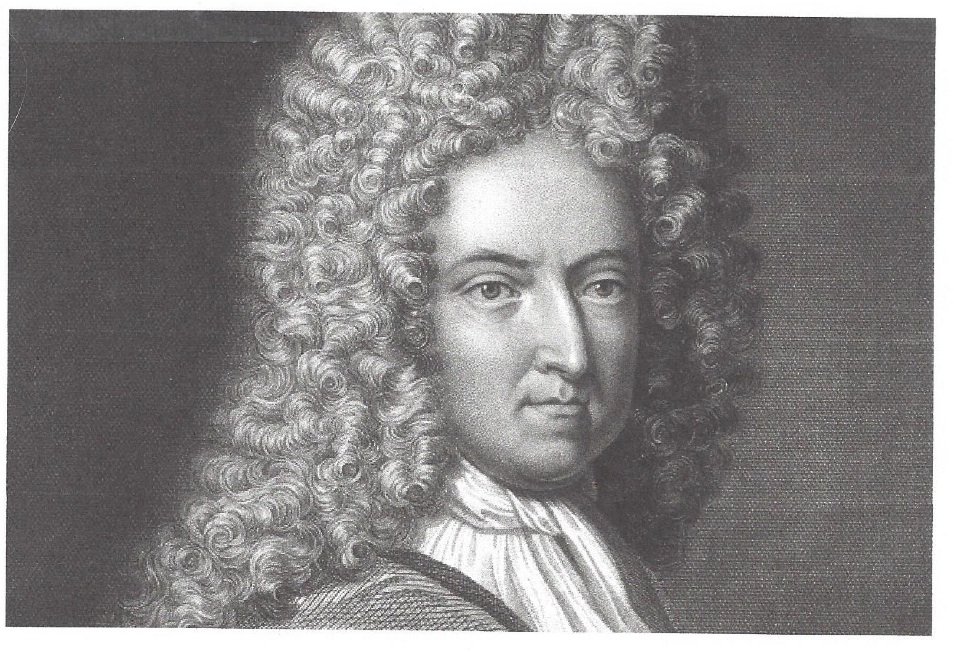 Daniel Defoe
Daniel Defoe
This remains essentially true even when it comes to Crusoe’s relationship with Friday: a relationship, in most readers’ memories, preserved in amber, aureoled by a soft, nostalgic glow. Though Defoe’s realism breaks through some barriers of racial prejudice and notions of primitive man, that breakthrough is severely limited by Defoe’s, and Crusoe’s, historical time and temperament. The “quest for the white man’s burden tends to end,” as Ian Watt remarked in The Rise of the Novel, “in the discovery of the perfect porter and personal servant.” The relationship between Crusoe and Friday, often touching, is hardly sentimental, and it remains as it was established from the outset. As a “first” step in communication, Crusoe, having let the man he rescued “know his name should be Friday, …likewise taught him to say Master, and then let him know, that was to be my name” (Robinson Crusoe, 209). The iconic Crusoe-Friday image is that of the master’s foot on the bowed head of the grateful but abject slave.
In their Farther Adventures, in Lisbon and London, Friday is either forgotten by both Crusoe and Defoe, whose memory of off-stage characters is notoriously short, or is reduced (as in the lengthy and gratuitous episode in “the Pyranean mountains,” where Friday clowns with the bear for the diversion of the white folk) to a comic entertainer. In his final role as “white” interpreter to the natives, Friday, having returned with Crusoe to their now populated island after an eight-year absence, is in the process of becoming just another in a crowd of native faces when he is singled out for one last task by his master. Answering, as always, the call to duty, he dies—heroically, to be sure, but more in keeping with Crusoe’s requirements, “useful, handy, and helpful” to the end. He has, in keeping with Crusoe’s imperative, proven loyal “to the last Drop.” The Master’s characteristically restrained grief is focused on the loss of a valuable servant. Revealingly, with Friday almost instantly eclipsed from his memory, Crusoe thinks at once about capturing another cannibal as a substitute slave (Farther Adventures, 73, 74).
.
4
The cost (cultural, emotional, and at last existential) to the perfect servant—never inquired into by either Crusoe or Defoe—has been imaginatively explored by such twentieth-century anti-Robinson French novelists as Jean Giraudoax, Suzanne et le Pacifique (1921) and Michel Tournier, in Vendredi: ou Les limbs du Pacifique (1967), and by South Africa’s J. M. Coetzee, in Foe (1987); as well as by poets: Derek Walcott, in “Crusoe’s Journal” (1970), Elizabeth Bishop, in “Crusoe in England” (1976), and A. D. Hope, in “Man Friday” (1985). The most sustained reworking of the Friday-theme occurs in Charles Martin’s remarkable 14-part poetic sequence, Passages from Friday (1983), in which Friday not only speaks, but writes. And the sequence ends in an astonishing semi-fusion of identities between Master and Slave.
As we move toward the conclusion of the book-length poem, Crusoe and Friday together build a means of escape: a great canoe, wrecked before it can be launched. The loss of the canoe and thus of “Deliverance,” prove “1 Disaster/ too many” for Crusoe, who grows absent-minded, and given to wandering off with his jug of raisin-wine. On one drunken expedition, he falls, eventually succumbing to his injuries—despite Friday’s nursing and prayers, notably including a repetition of Christ’s words at the Last Supper, “Take ye & eat/ of my owne flesh in the Remembrance of me” (XI). Martin may be remembering that Derek Walcott’s Crusoe, seen through the eyes of a descendant of Friday’s, is said to have altered “us/ into Good Fridays” who pray, “parroting our master’s style and voice…converted cannibals/ we learn with him to eat the flesh of Christ.” Having presumably (though we are never quite sure) reverted to cannibalism, a barbarous version of identity, Martin’s Friday, alone and without orders to obey, turns artist, carving wooden figures, both European and cannibals. But soon, suffering another and proto-Marxian crisis of identity, he grows alienated from the artifacts he has created, finding “no place for Friday in what Friday made; /then I was suddenly stricken….” (XIII)
First in feverish dreams, then in apparent reality, self-divided Friday, rigged out in Crusoe’s goatskin and hat, carrying “his Rifle & his Powder-Horn,” and “his Umbrella,” approaches that point on the island where his former Master had originally saved him from the cannibals. Friday is on a quest, but why and whither he cannot say:
For it was not I who set owt, nor was it him,
Nor was it the both of us together;
I know not who it was; but, as in my Dream
Of the Night befor, when I was neither
Master nor Friday, but I partook of each,
So was it that Morning. Whatever my Intention
I find myself walking on that Beach
to-ward that Poynt which I have earlier mention’d
and when I pass it by un-harmed, I collaps
upon the Sand I lay ther in great Fear
for a good long Time no savage Shapes
assail mine Eye no screeching payns mine Ear (XIV)
Though, as the poem had confirmed from the outset, there is no hope of returning to his true “home,” Friday, at poem’s close, at last takes imaginative possession of the “inchanted Island” formerly ruled by Crusoe, of whom Friday would seem to have “partook” in more senses than one. Appropriately, his passing of the critical Point “unharm’d,” and his final assertion of liberation from savage sights and colonialist sounds (“no screeeching payns mine Ear”) signal Charles Martin’s thematically-related allusion to Caliban’s imaginative possession of his enchanted island in Shakespeare’s Tempest: his enjoyment of the sounds that “hum about mine ears” in the exquisitely un-savage passage in Act III of The Tempest, beginning, “Be not afeard, the isle is full of noises,/ Sounds, and sweet airs, that give delight and hurt not” (III.ii.131-32).
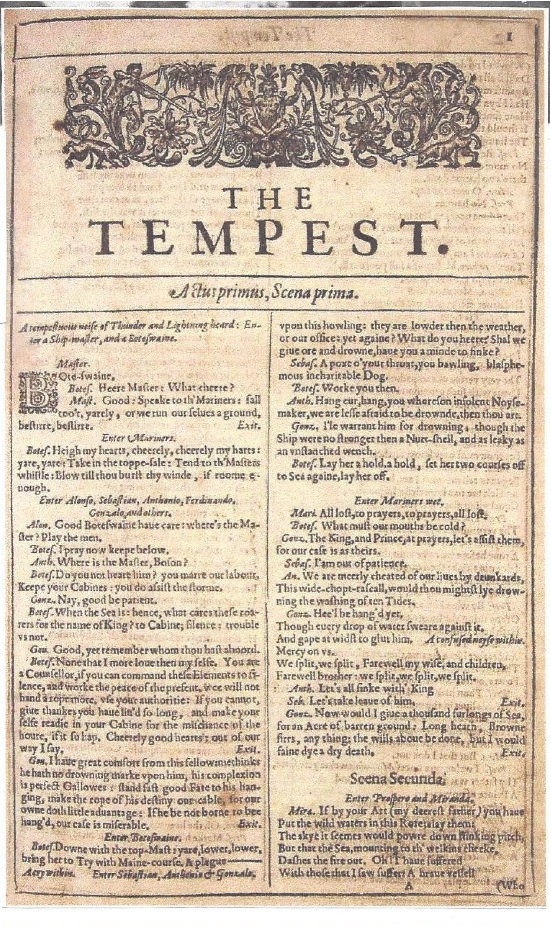 Title page of “The Tempest,” the first play in the “First Folio,” 1623
Title page of “The Tempest,” the first play in the “First Folio,” 1623
And Caliban knows the isle, knows it as his own. As he had earlier cried out to Prospero, his initial liberator become his tormenter after the attempted rape of Miranda, “This island’s mine, by Sycorax, my mother,/ Which thou taks’t from me/…Which first was mine own king” (I.ii.331-42). One might point out, accurately, that Sycorax originally took the island from Ariel, a delightful and freedom-loving spirit hardly likely to stake out, as Caliban does, a possessive, indigenous claim. Thus Caliban’s claim has merit; but while Charles Martin’s Friday takes possession of the island, Shakespeare’s Caliban will again be dispossessed, carted off with the others to Milan, where he will perhaps resume his interrupted tutelage under Prospero: a prospect less incongruous when we put aside for the moment his brutish gabble and recall the beauty of that speech which not only describes but exemplifies the beauty of the island’s “Sounds, and sweet airs, that give delight and hurt not.” Like Martin‘s Friday and Joyce’s Leopold Bloom, Shakespeare’s Caliban has a touch of the artist about him. He will, to be sure, cut a very strange figure in Milan, but, as Shakespeare may hint in the final words he gives to him (“I’ll be wise hereafter,/ And seek for grace”[V.i.294-95]), the half-human, even “demi-devil” Caliban may be both educable and, unlike the incorrigibly villainous Antonio and Sebastian, redeemable.
However we judge Prospero’s tone, he does say, “This thing of darkness, I/ Acknowledge mine” (V.i.275-76): an observation taken up and amplified by Aimé Césaire in perhaps the most striking of the many postcolonial Latin-American and African re-envisionings of Shakespeare’s play, one in which the cleavage between Master and Slave, Prospero and Caliban, is replaced by Identity. Writing in 1990, Stephen Greenblatt noted that it would take different artists from different cultures to “rewrite Shakespeare’s play and make good on Caliban’s claim” (“Culture,” 232). He was thinking of the Cuban critic Roberto Fernandez Retamar’s Caliban and Other Essays (trans. 1989), and of other cultural critics who, contending with Shakespeare, choose Caliban over Prospero and Ariel. Greenblatt may also have had in mind, along with other postcolonial re-writings, Césaire’s reimagining of The Tempest in a play in which the identities of Caliban and Prospero are fused into a unity resembling yet different from Friday’s hallucinatory “partaking” of both himself and Crusoe in Charles Martin’s Passages from Friday.
.
5
Like Robinson Crusoe, The Tempest has become a critical and cultural battleground, perhaps the most prominent site for combat between aesthetic and historicist readers. Exercising the hermeneutics of suspicion, many New Historicists depict intrinsic readers who insist on giving priority to what is actually there in a text—say, the text of this Shakespeare play—as both knowing and sinister: “hegemonic” reactionaries conspiring to keep the text’s “real,” if unintended, political meaning from being uttered. That “real” meaning, usually conveyed inadvertently by a politics-effacing author, typically has to do with the dominant (Western) culture’s sexist, classist, and racist suppression of its victims. Even more than Defoe’s novel, The Tempest has been the prime text for postcolonial theorists to insist on a shift of sympathy, whatever Shakespeare’s own intentions, from the dominant to the subversive character, from master Prospero to the enslaved Caliban. For decades now, The Tempest has been criticized, revised, and politically re-envisioned by directors, cultural critics, and creative writers. Last year, the Theater Department at my own college mounted a production of the play in which Caliban’s mother, the evil hag-witch, Sycorax, referred to but absent from Shakespeare’s play, was a central on-stage figure, the practitioner of a sorcery indistinguishable from Prospero’s!
 Prospero, Miranda, Ariel, and Caliban “The Enchanted Island: Before the Cell of Prospero” (Henry Fuseli, 1797)
Prospero, Miranda, Ariel, and Caliban “The Enchanted Island: Before the Cell of Prospero” (Henry Fuseli, 1797)
In the case of The Tempest —its island set in the Mediterranean but reflecting Shakespeare’s reading of Montaigne’s “On Cannibals” and of contemporary accounts of shipwreck and salvation in the Bermudas—Latin-American writers have been particularly active pro-Caliban revisers, beginning with Nicaraguan Rubén Dario’s 1898 essay “The Triumph of Caliban.” (Two years later, Uruguayan statesman José Enrique Rodó identified Latin American culture with Ariel.) As early as 1904, W. T Stead had objected to the imperialism represented in the play and sided with indigenous cultures; but a resurgence of interest in anti-colonial readings followed Octave Mannoni’s influential Psychologie de la colonization (1950), earlier mentioned, which was translated more pointedly into English six years later as Prospero and Caliban. Most notably, Aimé Césaire of Martinique in 1969 rewrote The Tempest in his own play, Une tempête, adapted for a Black Theater, and first performed in Tunisia (where Alonso’s daughter Claribel became queen in the wedding that set Shakespeare’s court party to sea in the first place and so subject to the magical storm conjured up by his magus). Césaire’s Prospero is a white master, Ariel a mulatto, and Caliban a Black slave; while Echu (named for the Yoruba god) threatens to “smite with his penis.” In Une tempête, Caliban, unlike resistant but non-violent Ariel, is an advocate of revolution, a Malcom X to Ariel’s Martin Luther King, Jr. Declaring that “now it’s over,” Césaire’s Caliban rebels against the hated “image” imposed on him by Prospero, and finally threatens that “one day,” he will raise his “bare fist” against his Shakespearean master.
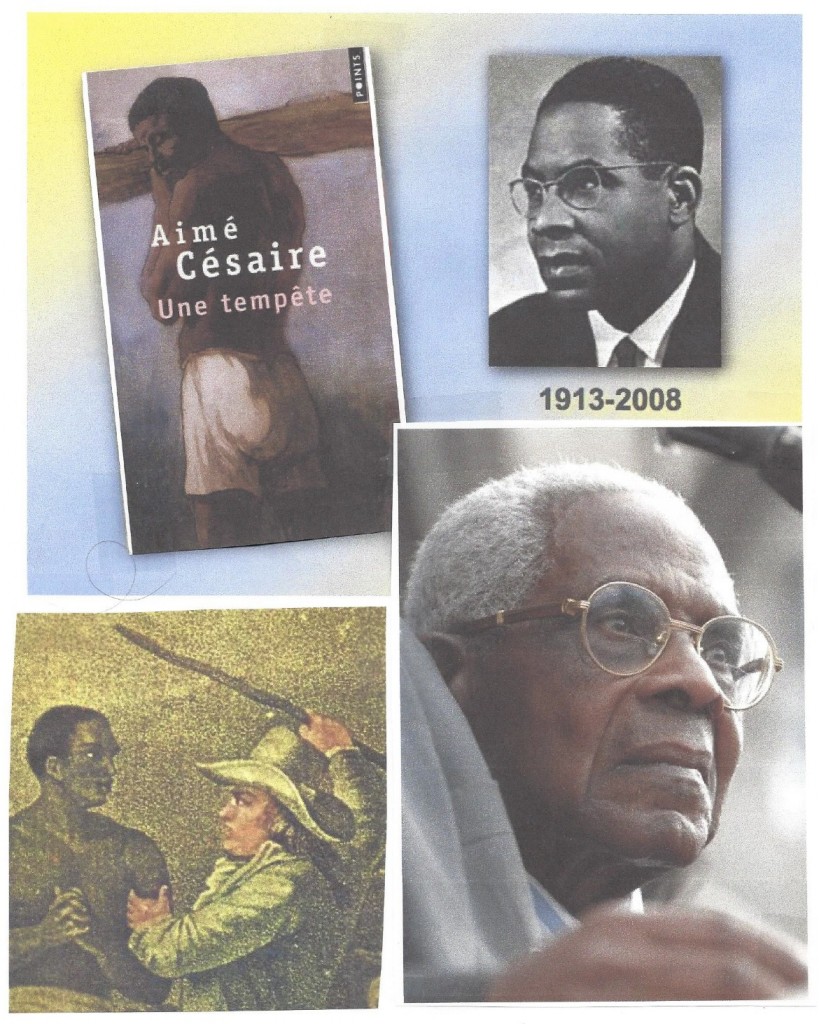 Aimé Césaire
Aimé Césaire
In Césaire’s revision, a fusion of Western surrealism and his own vision of négritude, master and slave end up trapped on the island when the others have left. After many years together, indicated by the curtain’s being lowered halfway, then raised, Prospero appears in semi-darkness, “aged” and weary. “Ah well, my old Caliban,” says he, “we’re the only two left on this island, just you and me. You and me! You-me! Me-you!” In having Prospero suddenly think of himself and Caliban as indistinguishable, Césaire at once (as we’ll see in a moment) echoes Shakespeare’s play, and, as Joan Dayan suggested in her 1992 essay “Playing Caliban: Césaire’s Tempest,” undermines the idea that either the “original” Shakespeare play or his own have priority. In his Prospero’s “You-me! Me-you!” fusion, she argues, Césaire “recognizes the force of mutuality, the knot of reciprocity between master and slave, between a prior ‘classic’ and his response to it.” This “labor of reciprocity” accounts for “the complexities of Césaire’s transformation: a labor that defies any simple opposition between black and white, master and slave, original and adaptation, authentic and fake.”
At the same time, Césaire, who, for all his postcolonial revisionism, seldom loses sight of the play he is adapting, may be recalling those lines already quoted from the final moments of Shakespeare’s Tempest. Indeed, Césaire’s “You-me! Me-you!” fusion may also have influenced Charles Martin’s later variation on the theme, when, at the end of Passages from Friday, the speaker-writer tells us that he is neither himself nor Crusoe, nor both together; “neither/ Master nor Friday, but I partook of each.” Martin’s Friday and Césaire’s Caliban might seem to flesh out, even fulfill, the reluctant concession of Shakespeare’s Prospero: “this thing of darkness I/ Acknowledge mine.” But Martin’s Friday seems to have literally consumed Crusoe, and by the time Césaire’s Prospero finally claims identification, Caliban himself has disappeared. The last word the audience hears—echoing and altering Caliban’s delusory and ignominious cry of “Freedom!” at the end of Act II of Shakespeare’s play—is the genuinely triumphant offstage cry, “LIBERTY!” (in Philip Crispin’s translation) or (in Richard Miller’s) “FREEDOM!!”—the distinctive Western value, as Orlando Patterson demonstrated at length in his award-winning two-volume Freedom.
The factors informing such rewritings—ethnicity, economics, social class, colonial history—are among the historical and perspectival elements that condition our responses to the world, and to texts. It is hardly surprising that some readers—politically engaged postcolonial readers of The Tempest, for example—will want to creatively fill in perceived absences and silences in ways that remold the text nearer to their own heart’s desires. In the Age of Theory, a poststructuralist era largely shaped by Nietzsche, most of us will agree that literary texts are not verbal icons hermetically sealed off from the world. They reflect and are influenced by the social and historical contexts in which they are complexly anchored, and they require readers, similarly influenced, to “actualize” them in what Hans-Georg Gadamer calls a hermeneutic or dialogic “fusion of horizons” (Truth and Method, 320). The danger is that in in “recontextualizing” a work of art, we may temporally limit it to its own, now “outdated,” historical moment; or that, in properly asking questions from our present socio-economic horizon, we will also impose answers on the past. Either way, we can hardy avoid inflicting aesthetic injury in the process.
Often, New Historicist readings, whatever their many illuminations, are closed monoreadings that risk losing the palpable poem in the attempt to recover sociopolitical realities the original author supposedly tried to evade. Marxian theorists—for example, Pierre Macherey in A Theory of Literary Production—insist that these silences and absences are inevitable, ideologically predetermined. Deconstructionists invariably find text-unravelling aporias; what many New Historicists must look for, and invariably find, in “privatized” poems is the effaced “public” dimension, the vestigial politics still lurking in the unspoken but no longer quite inaudible subtext. The claim that often follows, whether explicit or implicit, is that, having ferreted out these buried meanings, we have succeeding in “decoding” the poem, revealing its “absent” and therefore primary level of meaning—the interpretation having the highest priority. In the case of The Tempest, the admonition of Frank Kermode (one of the play’s two best editors, the other being Steven Orgel) is pertinent. Even when the political dimension is actually there, in Shakespeare’s text—however blind earlier readers seem to have been to the layer of meaning often over-emphasized in our own age—these relations, though they exist in the play, should be “secondary to the beautiful object itself” (Shakespeare’s Language, 300).
.
6
In concurring with Kermode that our actual “highest priority” should be aesthetic, I am not suggesting a simplistic return to the art-for-art’s-sake school of rarified, Paterian “Appreciation.” In the specific case of The Tempest, I would not go as far as one of my own cherished mentors, Harold Bloom. Inveighing against the contemporary critical trends he dismisses (deliberately echoing Nietzsche’s famous condemnation of ressentiment) as “the School of Resentment,” Bloom declares: “Of all Shakespeare’s plays, the two visionary comedies—A Midsummer Night’s Dream and The Tempest—these days share the sad distinction of being the worst interpreted and performed. Erotomania possesses the critics and directors of the Dream, while ideology drives the despoilers of The Tempest.” These characteristically judgmental sentences open the chapter on The Tempest in Bloom’s 1998 study, Shakespeare: The Invention of the Human. He goes on to make it clear that he is open to such creative re-visitings of the play as Robert Browning’s remarkable dramatic monologue, “Caliban upon Setebos,” and W. H. Auden’s prose address, from The Sea and the Mirror, titled “Caliban to the Audience,” which, though “more Auden than Shakespeare,” catches, as Bloom acknowledges, much of Caliban’s “dilemma” and his “pathos.” What stirs Bloom’s Nietzschean wrath are the political reconfigurings I’ve already mentioned, specifically the transformation of Caliban, “a poignant but cowardly (and murderous) half-human creature,” into “an African-Caribbean heroic Freedom Fighter,” a move Bloom dismisses as “not even a weak misreading.”
 Djimon Hounsou in the Julie Taymor film adaptation of “The Tempest” (2010), starring Helen Mirren as “Prospera.” Hounsou also played the leader of the slave mutiny in Steven Spielberg’s 1997 film “Amistad.”
Djimon Hounsou in the Julie Taymor film adaptation of “The Tempest” (2010), starring Helen Mirren as “Prospera.” Hounsou also played the leader of the slave mutiny in Steven Spielberg’s 1997 film “Amistad.”
This condemnation is less political (Bloom is on the permanent Left) than an allusion to his own long-held literary theory, which celebrates strong, but decidedly not weak, “misreading.” From The Anxiety of Influence on, Bloom has famously apotheosized the “strong reader,” one who brings to bear his own personality, and reads the work of others above all to stimulate his own creativity. Bloom has repeatedly acknowledged that his theory and practice derive primarily from two exemplars: Emerson and his disciple Nietzsche. Emerson insists, in “The American Scholar,” that there is “creative reading as well as creative writing,” and announces, in “Uses of Great Men” (in Representative Men), that “Other men are lenses through which we read our own minds.” At the very outset of Ecce Homo (in the chapter “Why I Write Such Good Books”), Nietzsche claims that, “Ultimately, nobody can get more out of things, including books, than he already knows.” (He then goes on, perhaps “inconsistently” but certainly prophetically, to complain that anyone who claimed to understand his work “had made up something out of me after his own image.”)
This Emersonian-Nietzschean line of revisionary reading Bloom labels “antithetical,” this time borrowing his term from Yeats, who famously contrasts an italicized and preferred antithetical to the primary; who called Nietzsche his “strong enchanter”; and who declared in his 1930 diary, “We do not seek truth in argument or in books, but clarification of what we already believe” (Explorations, 310). Bloom champions “strong” misprision (misreading), repeatedly asserting, from The Anxiety of Influence on, that “really strong poets can read only themselves,” indeed, that for such readers “to be judicious is to be weak.” Bloom’s dismissal is therefore all the more damning when he insists that the post-colonial reinterpretation of Caliban “is not even a weak misreading; that anyone who arrives at that view is simply not interested in reading the play at all. Marxists, multiculturalists, feminists, nouveau historicists—the usual suspects—know their causes but not Shakespeare’s plays” (Shakespeare, 622).
 One of many sinister Calibans
One of many sinister Calibans
Without rejecting it, I would qualify the indictment. Those “suspects” are reading the play, but reading it badly, allowing their political “causes,” which really are implicit in Shakespeare’s text, to become primary rather than remaining, in Kermode’s term, “secondary.” The stock of Prospero, that valorized magus and Shakespeare-surrogate of much of the earlier criticism, has fallen in the twentieth century. Postcolonial critics have charged that the admiration of Prospero so prominent in the nineteenth century reflected a willful evasion of crucial aspects of the play. Though Prospero retains majority support, his (often justified) harshness, always there in the text, has become more evident, both to readers and, depending on the director, to theatergoers. Having become more sensitive to the irascible, bullying aspects of Prospero, many have consequently become more sympathetic to the plight of the dispossessed, subjugated, and always fascinating Caliban. Bloom himself describes Caliban as “poignant” and applauds Auden for stressing his dilemma and pathos. What Bloom resists is the determinism, ideological and theoretical, of the political readers and re-writers of The Tempest. For them, Caliban, suppressed not only by Prospero, but by Shakespeare as well, must be the play’s hero. Here, the return of the repressed takes the form of Identity politics, returning with a vengeance.
 Detail from Henry Fuseli’s engraving
Detail from Henry Fuseli’s engraving
.
7
It is, in general, an intriguing poststructuralist phenomenon that so many who theoretically pronounce texts indeterminate—bereft of authorial meaning, with text and interpretation alike determined by the inevitable linguistic gap between signifier and signified, by temporal limitations, by political ideology, class or gender bias—also, in practice, repeatedly claim to have decoded, “unmasked” or “exposed,” what is “really” going on: what a play such as The Tempest “conceals” as well as what it “reveals,” even to “correct” what has been “distorted.” As Richard Levin asked in 1990—cocking a mischievous eye in his PMLA article “The Politics and Poetics of Bardicide”—who is more guilty of what the indeterminists dismiss as “hubristic objectivism.” Is it those who believe that literary works are written by actual authors whose meanings (intention having become achievement) are there in the text, to be interpreted? Or is it those for whom the “hermeneutic vacuum” left by the Death of the Author must be filled by “a universal law” that “dictates what one must look for, and must find, in every [text]?”
I would add, in the case of The Tempest, what may be too obvious to need saying: that Aimé Césaire has every right to recreate Shakespeare in forging his own work of art, especially since Une tempête, as Malcolm Bowie noted in reviewing the 1998 Gate Theater production in London, “is not simply a new reading of Shakespeare but an original play of astonishing power.” But for the most part we are dealing with cultural revisionists who, having not found the political subtext of The Tempest adequately expressed, are compelled to “foreground” or “privilege” it in ways which—however creative, illuminating, and even liberating—inevitably distort the original play. Both as an “immoralist” moralist and as a philological “good reader” able to “read off a text as a text” without “falsifying it by interposing an interpretation,” Nietzsche (going, in this passage from The Antichrist §52 and its original formulation in The Will to Power §479, against his usual insistence on “perspectivism” and “interpretation”), would approve of Bloom’s enrollment of such revisionists in “The School of Resentment.” For the crucial Nietzschean concept of ressentiment—stemming from the contrast introduced in Beyond Good and Evil §260 between “master morality and slave morality,” and fully developed a year later in On the Genealogy of Morals—has to do with frustration, psychological and political, arising from a sense of inferiority inseparable from subjugation. Of course, to again state the obvious, this is precisely what postcolonial “appropriations” of The Tempest set out to rectify, focusing inevitably on the subjugated figure that seems to embody both the plight and the hope of the victims of colonial oppression To quote Cuban Fernández Retamar’s famous and defiant rhetorical question: “what is our history, what is our culture, if not the history and culture of Caliban?” (Caliban and Other Essays, 14).
Finally, in terms of the revisionist act of creative reading performed by Césaire in Une tempête: the philologist in Nietzsche would probably concur with Milton’s famous distinction in Sonnet XII: there are those that “bawl for freedom” and “still revolt when truth would set them free./ License they mean when they cry liberty.” FREEDOM/ LIBERTY! cries Césaire’s Caliban. The cry is thrilling as an expression of belated, if incomplete, postcolonial liberation; but it “means” (not as a legitimate act of creative rewriting, but as a dubious act of literary interpretation) “License” in regard to the original Tempest. To be sure, as New Historicist Stephen Greenblatt remarked in 1990 (the year he borrowed from Caliban the title of his collection of essays, Learning to Curse), Shakespeare’s imaginative mobility, genius, and empathy enabled him “to display cracks in the glacial front of princely power and to record a voice, the voice of the displaced and oppressed, that is heard scarcely anywhere else in his own time.” If, Greenblatt concludes, “it is the task of cultural criticism to decipher the power of Prospero, it is equally the task to hear the accents of Caliban” (“Culture,” 232).
And that’s true, too. But nothing is got for nothing. One version of what Amartya Sen titularly juxtaposes as Identity and Violence is the textual violence that can be done, and increasingly has been done, to the last masterwork completely written by Shakespeare, of whose authorial death rumors have been greatly exaggerated. Just as he went against the prejudicial grain of his age to enable us to hear what is most moving in the speeches of Othello and Shylock, Shakespeare intended that we should hear the authentic accents of Caliban. But even in a play as mysterious as The Tempest, we can detect an overarching authorial intention. Intentional fallacy notwithstanding, an author’s intention is not dismissed even by such radical linguistic skeptics as Nietzsche and Derrida. The latter, founding father of deconstruction, refers to authorial intention as an “indispensable guardrail…protecting” readings from going over the cliff, into that abyss of wild excess otherwise sanctioned by his notorious term “freeplay” (Of Grammatology, 158).
We want and need to hear the accents of a disinherited and exploited Caliban, as Shakespeare clearly intended we should. But not if amplifying Caliban’s voice through the filtering ear-trumpet of modern Identity politics comes at the cost of distorting the play Shakespeare actually wrote. I may find more difference than identity between early and later Coleridge in dealing with race, and more identity than difference between Defoe and Crusoe on the issue of slavery. Though Césaire’s “Adaptation for a Black Theatre” may be “based” on Shakespeare’s play, we are obviously intended by its author to find more difference than identity when it comes to the treatment of Caliban in Une tempête, a revolutionary text that is at once an adaptation and a despoiler of The Tempest. We will be moved and instructed by both plays; but, in the end, we should render unto Césaire the things that are Césaire’s, and unto godlike Shakespeare the things that are Shakespeare’s.
 N.C. Wyeth illustration of Robinson Crusoe
N.C. Wyeth illustration of Robinson Crusoe
.
Afterword
This brief essay, as personal as it is “scholarly,” makes no attempt at an exhaustive examination of the vast body of modern criticism that has focused on the cultural, historical, and political aspects of The Tempest. For those who wish to pursue the subject, the following provide excellent starting points.
The Tempest and Its Travels, ed. Peter Hulme and William H. Sherman (Reaktion Books, 2000), brings together specially commissioned critical essays on the play’s various contexts and intertexts; the volume also includes poems and visual images. Along with excerpts from Césaire’s play, the editors include excerpts from two other stage versions: Raquel Carrió and Flora Lauten’s Otra Tempestad, put on at The Globe (London) in 1998, and Tempest(s), staged at the Terra Nova Theater Institute in Copenhagen the following year. Arguing against the dismissal of anti-colonial readings and “appropriations” of Shakespeare’s text, Peter Hulme insists that such readings and stage-performances “do, actually…speak to the real text.” We should “listen to them and write a place for them in Shakespeare criticism” (233).
In a study illuminating the “New World” aspect of Caliban, Hulme had earlier explored that historical context, discussing colonial encounters between Europe and the Native Caribbean from 1492-1797. See Hulme, Prospero and Caliban (Routledge, 1986). The origin of the figure of Caliban and his disparate metamorphoses in stage history through 1993 is expertly examined in Shakespeare’s Caliban: A Cultural History by Alden T. Vaughan and Virginia Mason Vaughan (Cambridge UP, 1993), and in Constellation Caliban: Figurations of a Character, eds. Nadia Lie and Theo D’haen (Amsterdam, 1997).
A year earlier, Jonathan Hart, going beyond both an ideal Prospero and a heroic Caliban, and attending to the play’s various genres, explored the interaction of the “political themes” of authority and rebellion (or freedom and slavery) with “the romance themes of survival, regeneration, and wonder.” See Hart’s “Redeeming The Tempest,” Cahiers Elizabethains (April, 1996): 23-38.
Works Cited
Bloom, Harold. Shakespeare: The Invention of the Human. Riverhead, 1998.
Bowie, Malcolm. “Island Infamy” [review of Une tempête] TLS (9 October 1998), 22.
Césaire, Aimé, Une tempête, “Based on Shakespeare’s The Tempest—Adaptation for a Black Theater.” Translated by Richard Miller (Online: firstyear.barnard.edu/Shakespeare/tempest/tempete), and by Philip Crispin (in 1998, for the Gate Theater production, and published by Oberon Books).
Coleridge, Samuel Taylor. Marginalia, vol. 1, ed. George Whalley. Princeton UP, 1984.
____________________. “On the Slave Trade,” in Lectures 1795: On Politics and Religion, ed. Louis Patton and Peter Mann. Princeton UP, 1971.
Dayan, Joan. “Playing Caliban: Césaire’s Tempest.” Arizona Quarterly 48 (1992), 125-45.
Defoe, Daniel. The Life and Adventures of Robinson Crusoe, ed. Angus Ross. Penguin, 1965.
__________. The Farther Adventures of Robinson Crusoe, in vol. 3 of the 14-volume Shakespeare Head edition of Defoe. Basil Blackwell, 1927.
__________. Defoe’s Review, ed. Arthur Wellesley Secord. Facsimile Text Society, 22 vols. Columbia UP, 1938.
Derrida, Jacques, Of Grammatology, trans. Gayatri Spivak. Johns Hopkins UP, 1976.
Emerson, Ralph Waldo. “The American Scholar” and “The Uses of Great Men” (Introduction to Representative Men ), both in Emerson: Essays and Lectures, ed. Joel Porte. Library of America, 1983.
Gadamer, Hans-Georg. Truth and Method. [1960] Seabury Press, 1975.
Greenblatt, Stephen , “Culture,” in Critical Terms for Literary Study, ed. Frank Lentricchia and Thomas McLaughlin, pp.225-32. U of Chicago P, 1990.
________________. Learning to Curse: Essays in Early Modern Culture. Routledge, 1990.
Keane, Patrick J. Coleridge’s Submerged Politics. U of Missouri P, 1994.
_____________. “Slavery and the Slave Trade: Crusoe as Defoe’s Representative,” in Critical Essays on Daniel Defoe, ed. Roger D. Lund, pp. 97-120. G. K. Hall, 1997.
Kermode, Frank. Shakespeare’s Language. Farrar, Strauss, Giroux, 2000.
Levin, Richard. “The Poetics and Politics of Bardicide.” PMLA 105 (1990): 491-502.
Mannoni, Octave. Prospero and Caliban: The Psychology of Colonization. Praeger,1956.
Martin, Charles. Passages from Friday. Abbatoir Press, 1983.
Nietzsche, Friedrich. The Antichrist, in The Portable Nietzsche, ed. and trans. Walter Kaufmann. pp. 565-660. Viking Press, 1968.
________________. The Will to Power, trans. Walter Kaufmann and R. J. Hollingdale. Random House, 1967.
Retamar, Fernández. Caliban and Other Essays, trans. Edward Baker. Minneapolis, 1989.
Shakespeare, William. The Tempest, Arden Edition, ed. Frank Kermode. Routledge, 1964.
__________________. The Tempest, Oxford Edition, ed. Steven Orgel. Oxford, 1987
Seidel, Michael, “Robinson Crusoe”: Island Myths and the Novel. Twayne, 1991.
Sen, Amartya, Identity and Violence: The Illusion of Destiny. Norton, 2006.
Stead, W. T. “First Impressions of the Theatre.” Review of Reviews (October, 1904): 360-67.
Thompson, E. P. “Disenchantment or Default: A Lay Sermon” [1969], reprinted in Thompson, The Romantics: England in a Revolutionary Age. Free Press, 1997. pp. 33-74.
Walcott, Derek, The Gulf: Poems by Derek Walcott. Farrar, Straus, and Giroux, 1970.
Watt, Ian. The Rise of the Novel. University of California Press, 1957.
Yeats, W. B. The Letters of W. B. Yeats, ed. Allan Wade. Rupert Hart-David, 1954.
__________. Explorations. Macmillan, 1963
— Patrick J. Keane
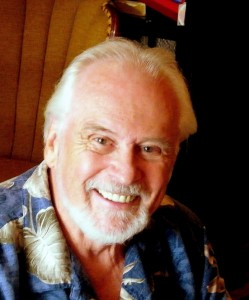
Patrick J. Keane is Professor Emeritus of Le Moyne College and Contributing Editor at Numéro Cinq. Though he has written on a wide range of topics, his areas of special interest have been 19th and 20th-century poetry in the Romantic tradition; Irish literature and history; the interactions of literature with philosophic, religious, and political thinking; the impact of Nietzsche on certain 20th century writers; and, most recently, Transatlantic studies, exploring the influence of German Idealist philosophy and British Romanticism on American writers. His books include William Butler Yeats: Contemporary Studies in Literature (1973), A Wild Civility: Interactions in the Poetry and Thought of Robert Graves (1980), Yeats’s Interactions with Tradition (1987), Terrible Beauty: Yeats, Joyce, Ireland and the Myth of the Devouring Female (1988), Coleridge’s Submerged Politics (1994), Emerson, Romanticism, and Intuitive Reason: The Transatlantic “Light of All Our Day” (2003), and Emily Dickinson’s Approving God: Divine Design and the Problem of Suffering (2007).
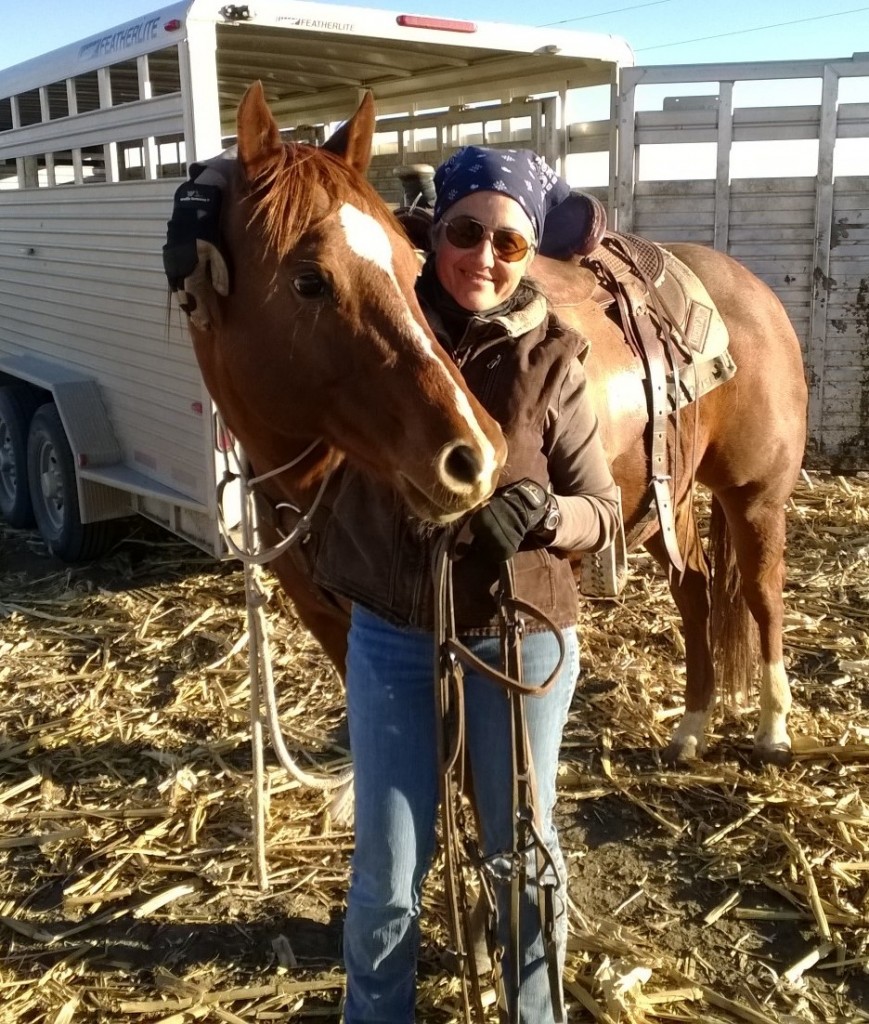
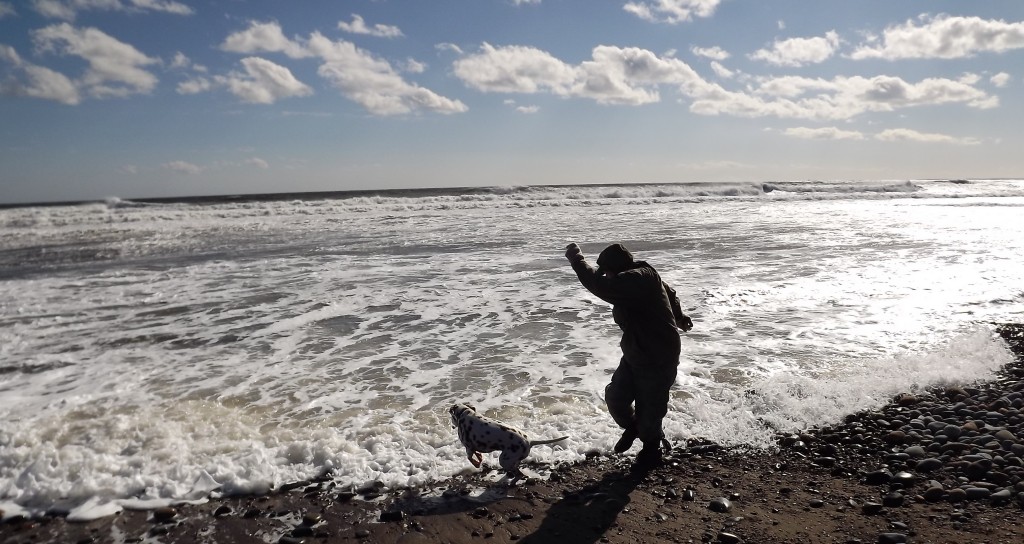
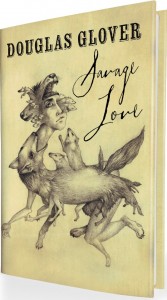
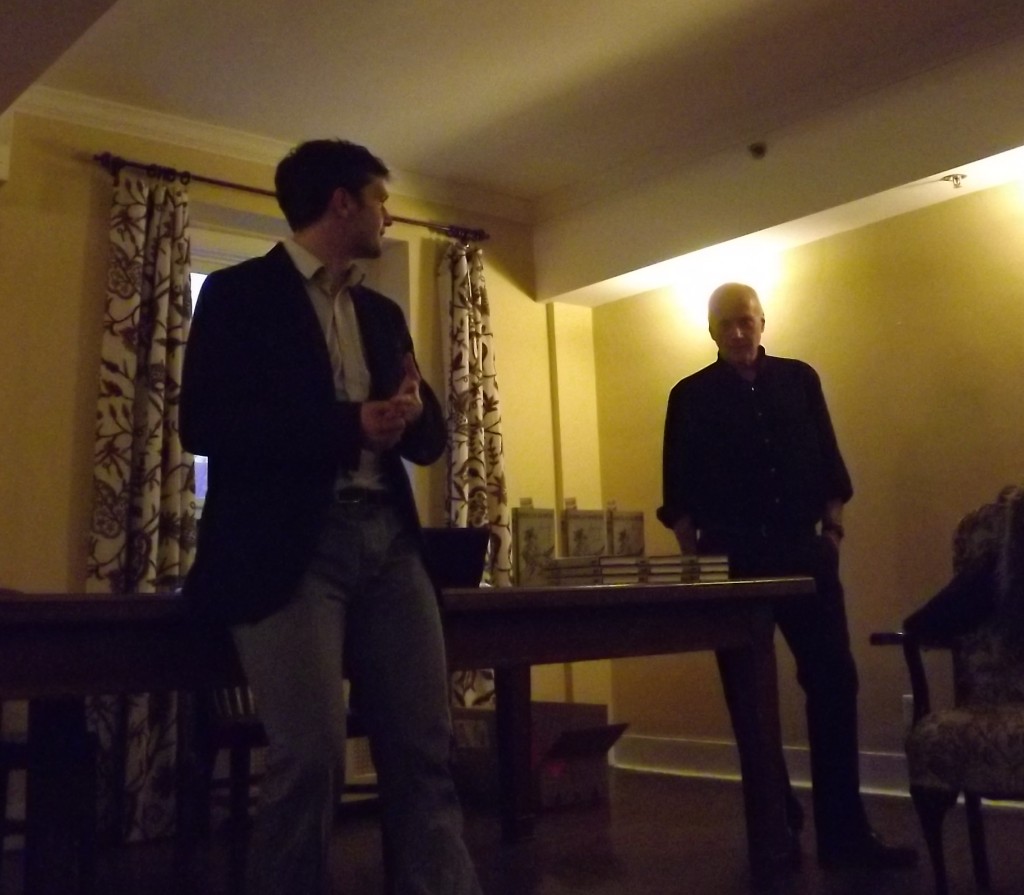
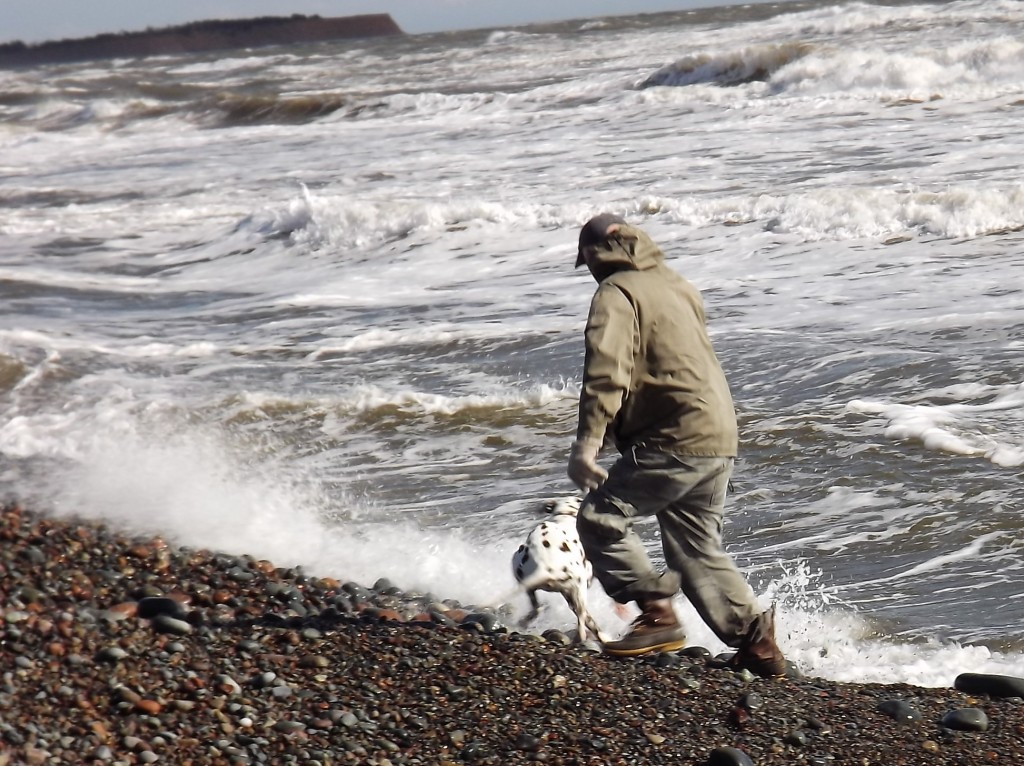
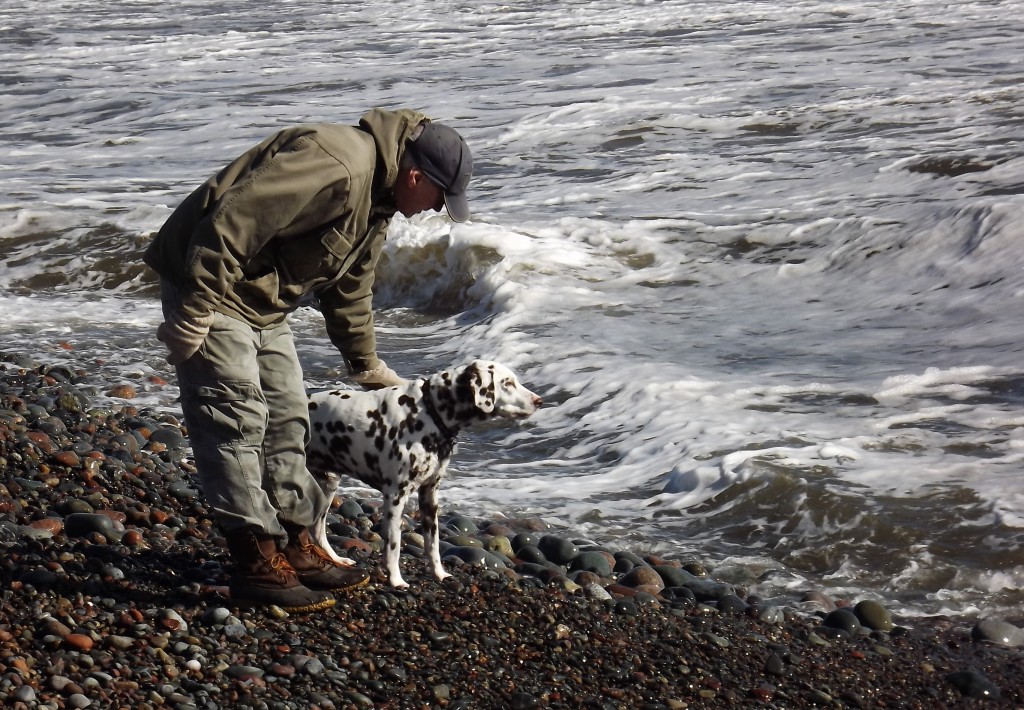








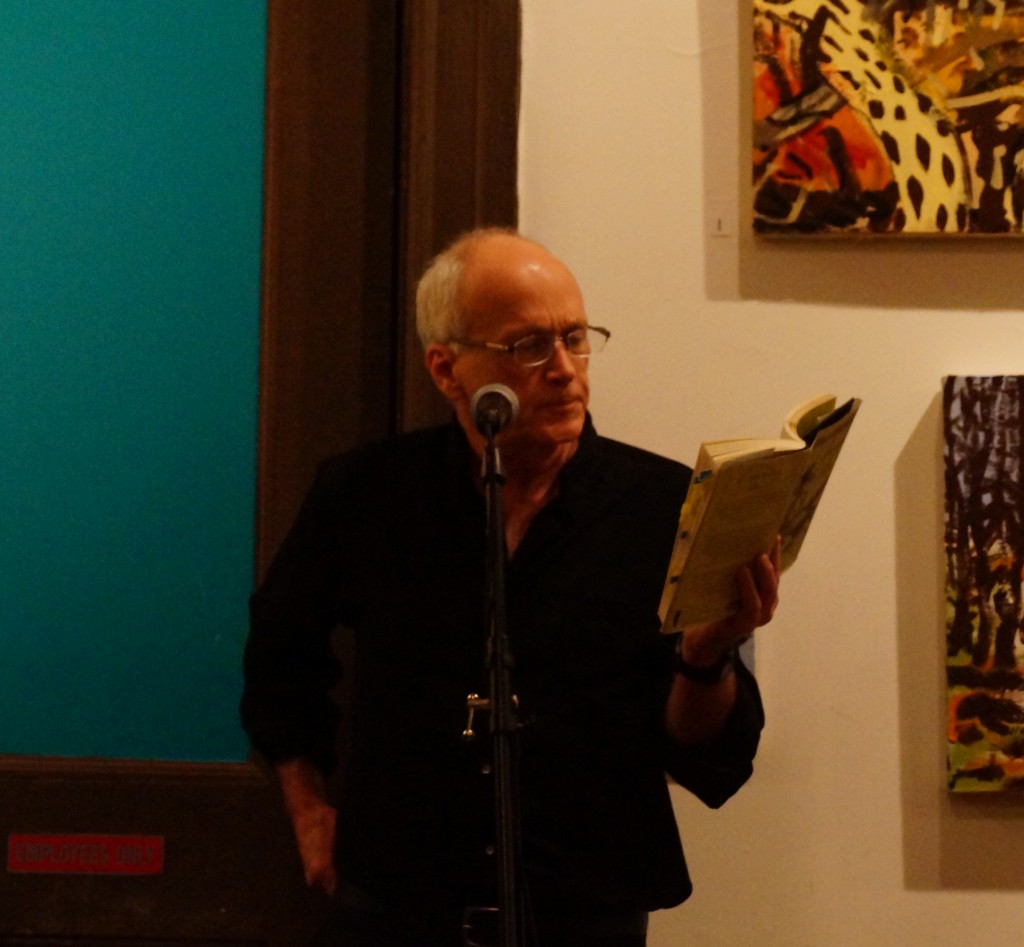
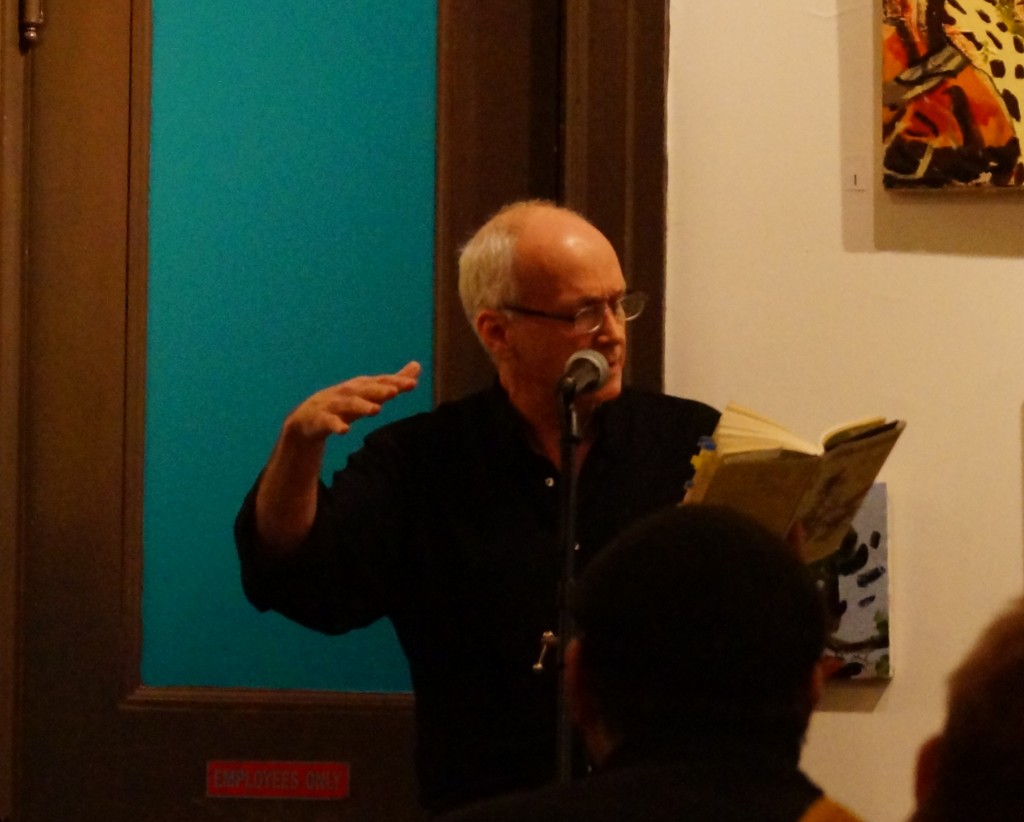

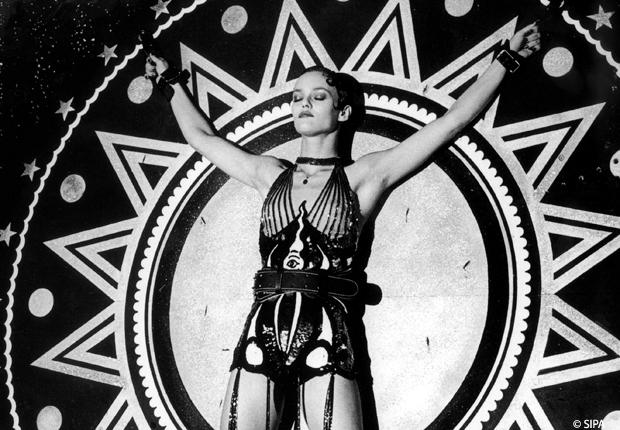
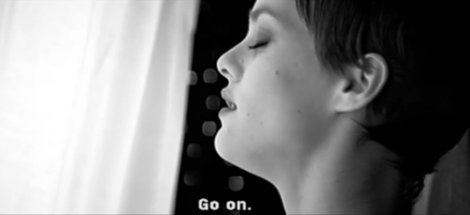

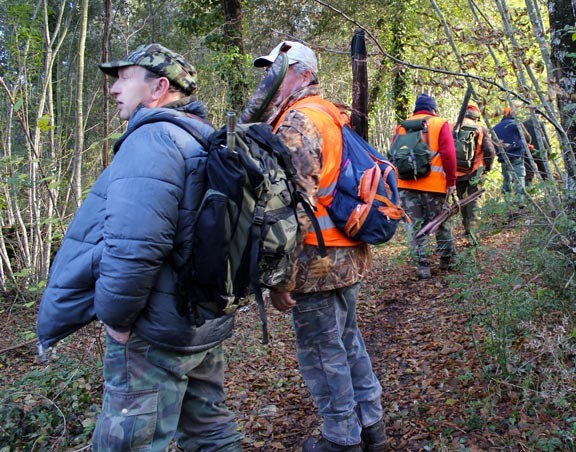

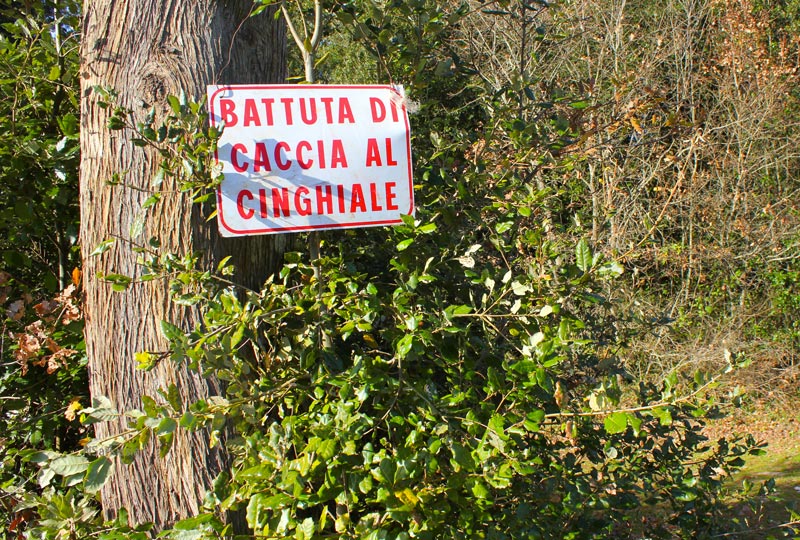

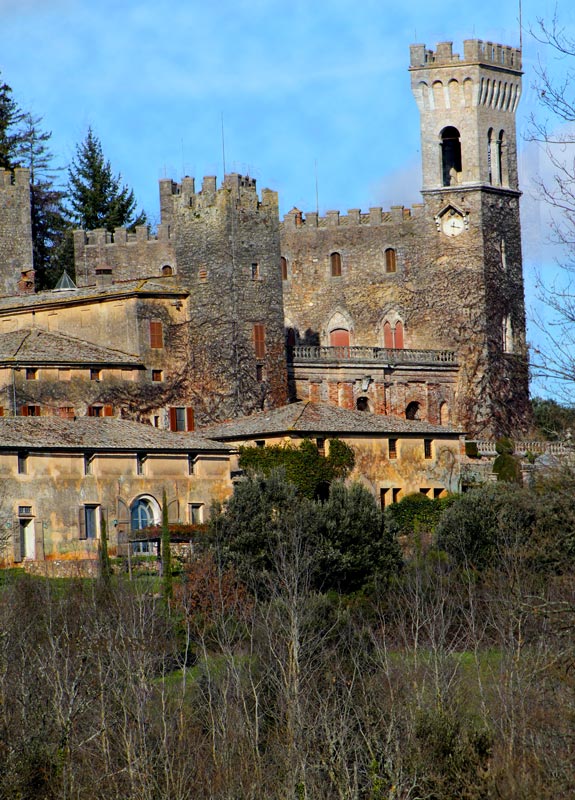


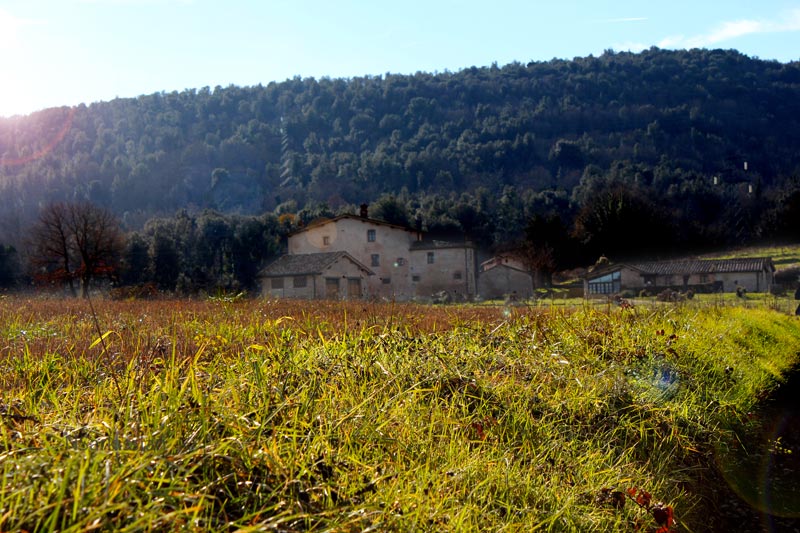

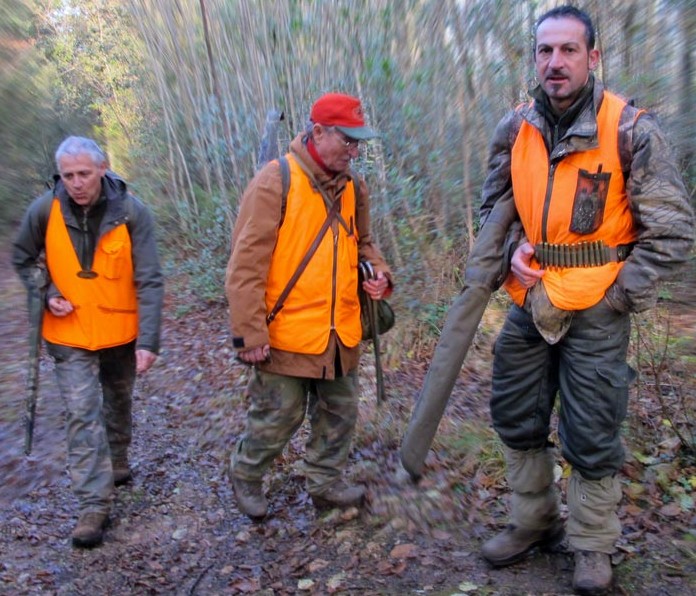

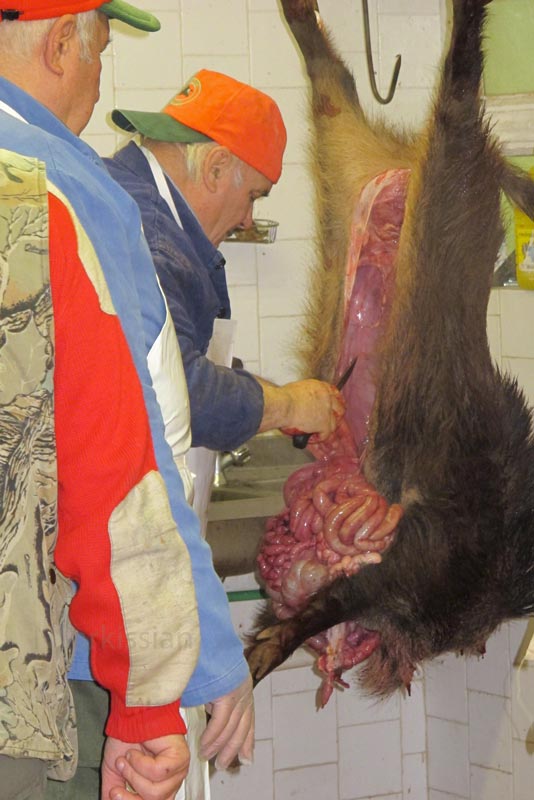

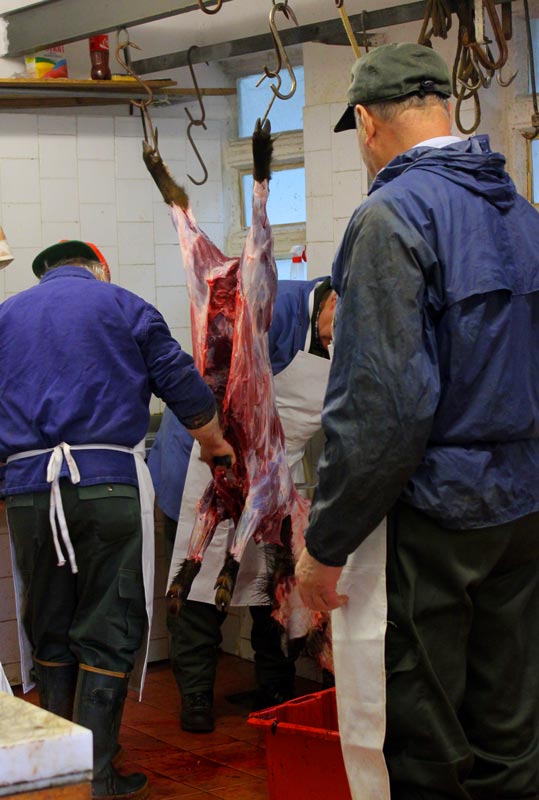




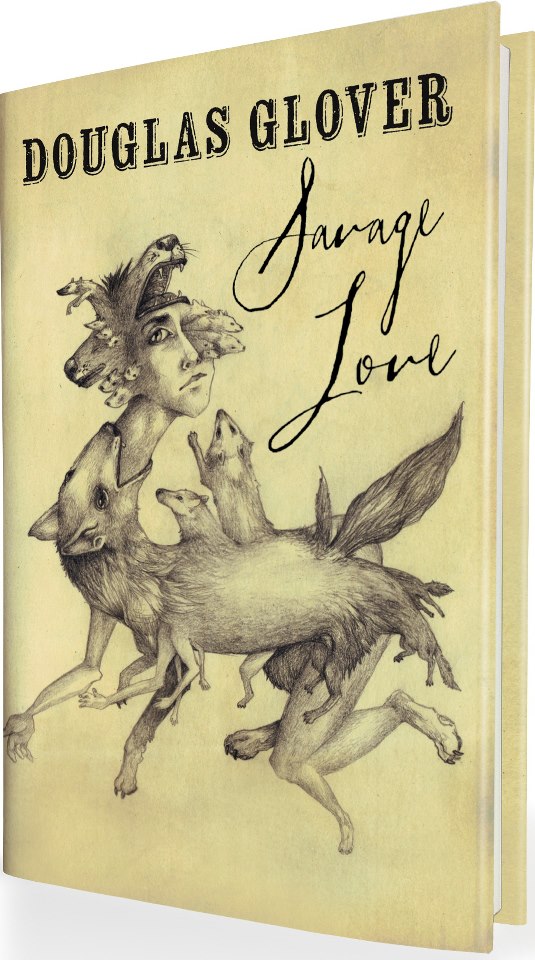

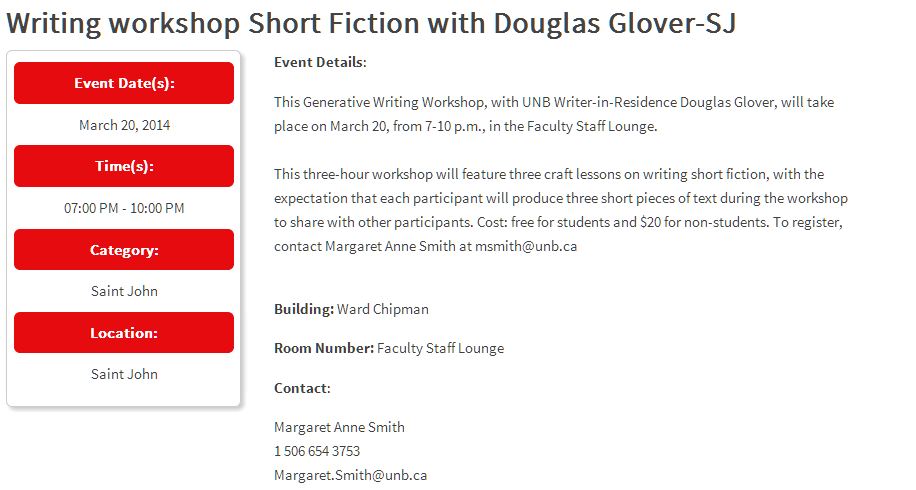

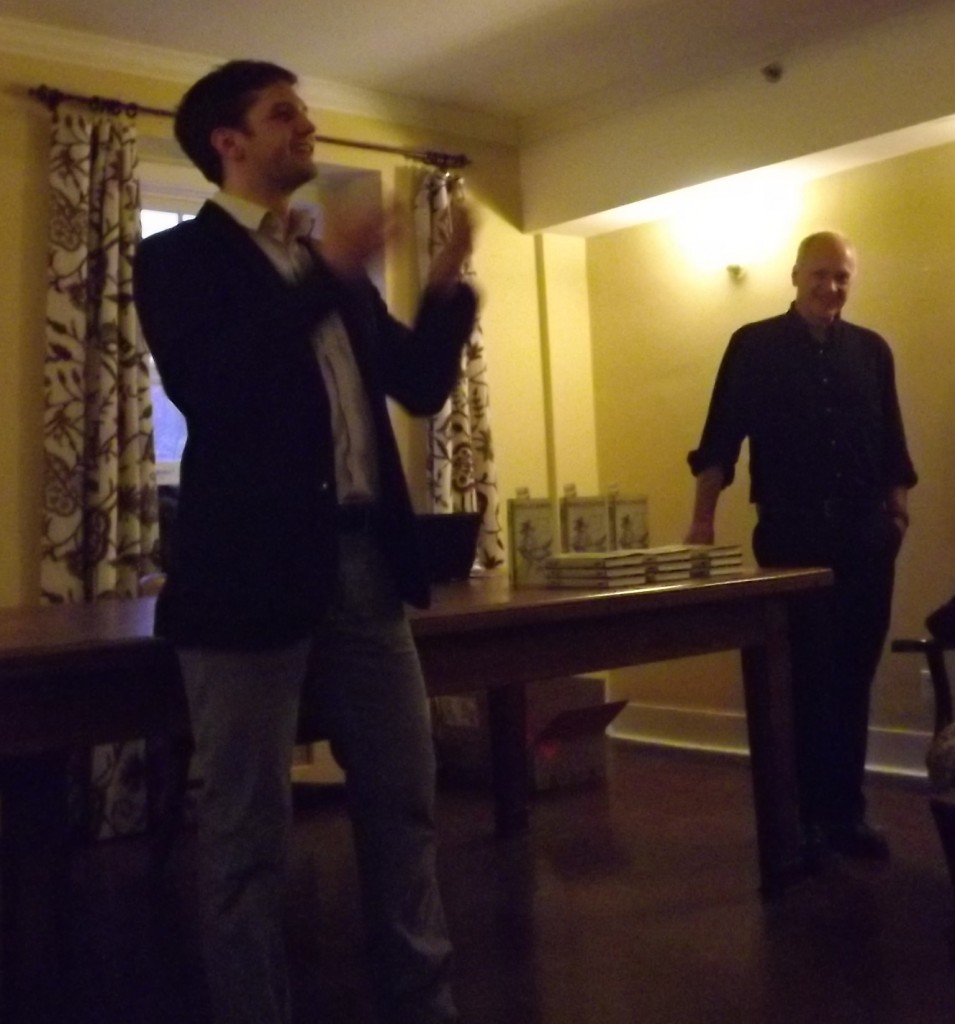
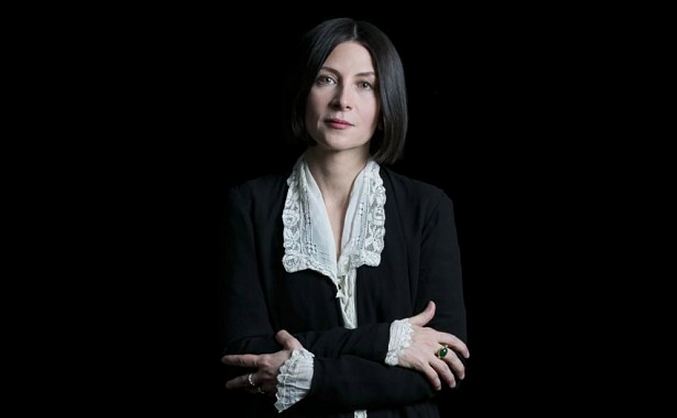

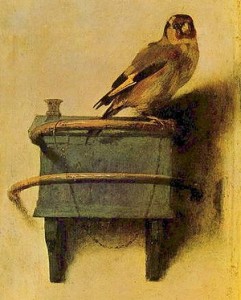




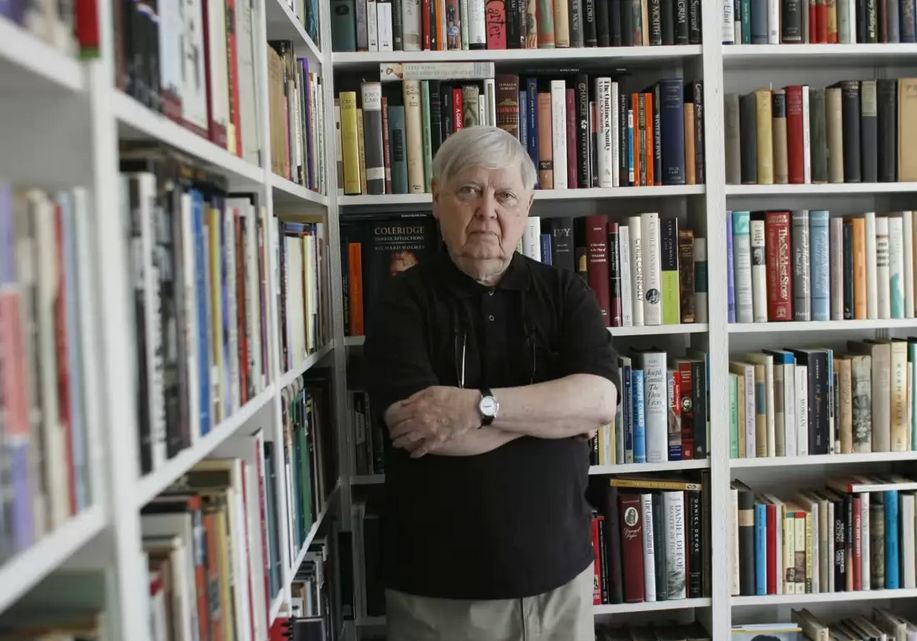
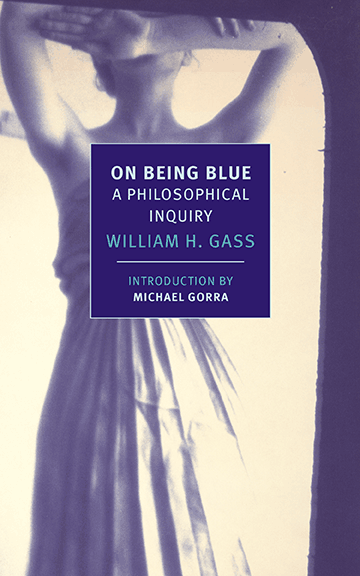
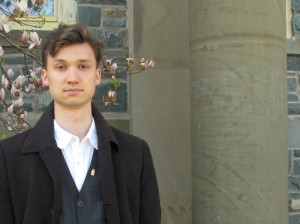
 Djimon Hounsou as Caliban
Djimon Hounsou as Caliban











